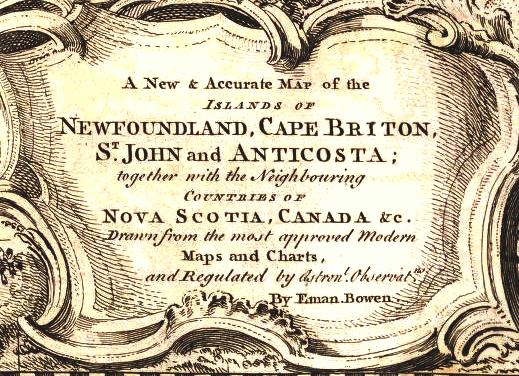
|
These are facts, historical facts. The Maltese Falcon |
|---|
|
Timeline of the Seven Years War 1754-1763
The period 2004-2013 is the 250th anniversary of the Seven Years War, a.k.a. the French and Indian War. Includes important events in Nova Scotia. http://ns1763.ca/remem/7yw-timeline-w.html |

On 29 November 1798, the legislature of St. John Island
voted to change the colony's name to Prince Edward Island.
The name change went into effect on 1 January 1800.
The stated reason for the change was the excessive
confusion caused by having three population centers
on British North America's Atlantic coast all named
for Saint John: the island colony and two cities
(not to mention the Saint John River valley).
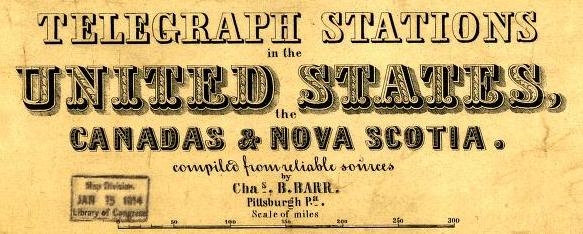
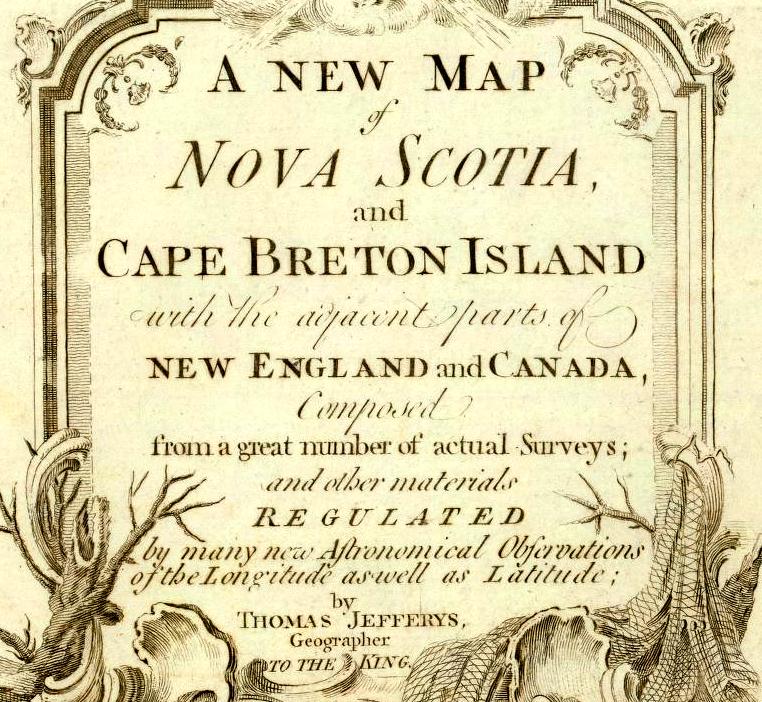
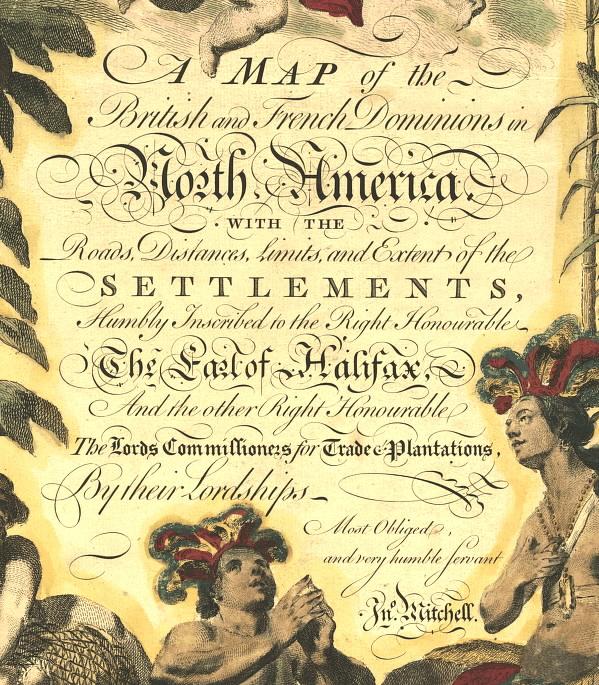
Note: The historic webpages listed above are archived copies,
but those below are the original webpages, not archived copies.
This webpage was "last modified on December 9, 1996" (more than ten years ago).
This webpage was "last modified on December 10, 1996" (more than ten years ago).
|
John Alexander Douglas McCurdy (1886-1961) Archived: 1998 December 2 http://web.archive.org/web/19981202171437/http://exn.ca/Mini/Flightdeck/Aviators/mccurdy.cfm Archived: 1999 April 30 http://web.archive.org/web/19990430035437/http://exn.ca/Mini/Flightdeck/Aviators/mccurdy.cfm Archived: 2000 January 8 http://web.archive.org/web/20000108090025/http://exn.ca/FlightDeck/Aviators/mccurdy.cfm Archived: 2001 June 10 http://web.archive.org/web/20010610050020/http://exn.ca/Mini/Flightdeck/Aviators/mccurdy.cfm Archived: 2002 February 2 http://web.archive.org/web/20020202040943/http://www.exn.ca/FlightDeck/Aviators/mccurdy.cfm Archived: 2003 January 12 http://web.archive.org/web/20030112185503/http://exn.ca/Mini/Flightdeck/Aviators/mccurdy.cfm |

|
An Unshackled Internet: If Joe Howe Were Designing Cyberspace by Parker Barss Donham Archived: 1999 May 05 http://web.archive.org/web/19990505231730/http://www.efc.ca/pages/donham2.html Archived: 2000 August 15 http://web.archive.org/web/20000815213151/http://www.efc.ca/pages/donham2.html Archived: 2001 April 30 http://web.archive.org/web/20010430153010/http://www.efc.ca/pages/donham2.html Archived: 2002 June 23 http://web.archive.org/web/20020623060158/http://www.efc.ca/pages/donham2.html Archived: 2003 April 18 http://web.archive.org/web/20030418091717/http://www.efc.ca/pages/donham2.html Archived: 2004 October 09 http://web.archive.org/web/20041009195418/http://www.efc.ca/pages/donham2.html Archived: 2005 June 17 http://web.archive.org/web/20050617084412/http://www.efc.ca/pages/donham2.html |
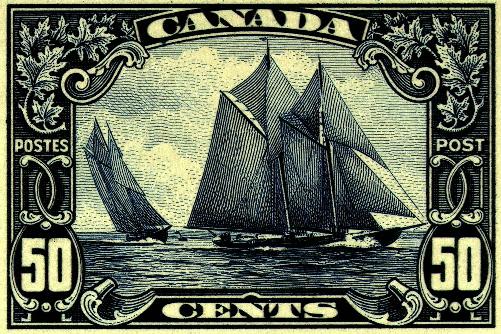
Nova Scotia Stampshttp://www.frmfoundation.org/NovaScotia/default.asp http://www.frmfoundation.org/NovaScotia/period1/default.asp http://www.frmfoundation.org/NovaScotia/period2/default.asp http://www.frmfoundation.org/NovaScotia/period3/default.asp October 1767, Lunenburg to London http://www.frmfoundation.org/NovaScotia/period1/images/ns0102.pdf |
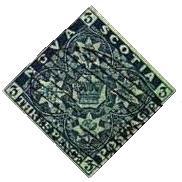
1851 Nova Scotia 3-penny blue 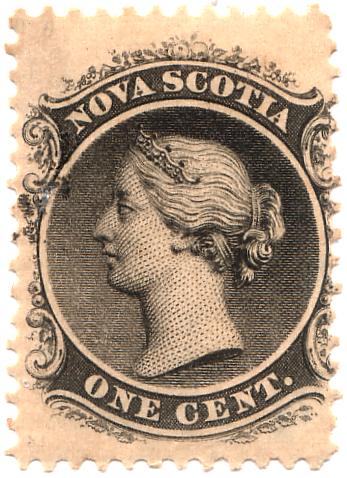
Nova Scotia 1-cent postage stamp, first issued 1860, 21×27mm 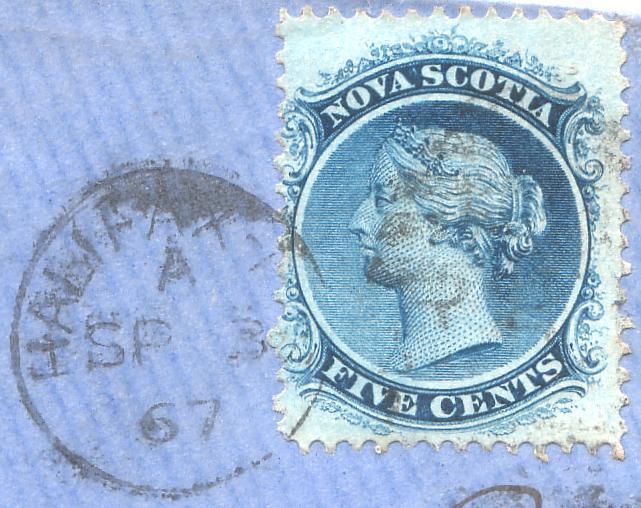
Nova Scotia 5-cent postage stamp, first issued 1860, 21×27mm cancelled at Halifax, 3 September 1867 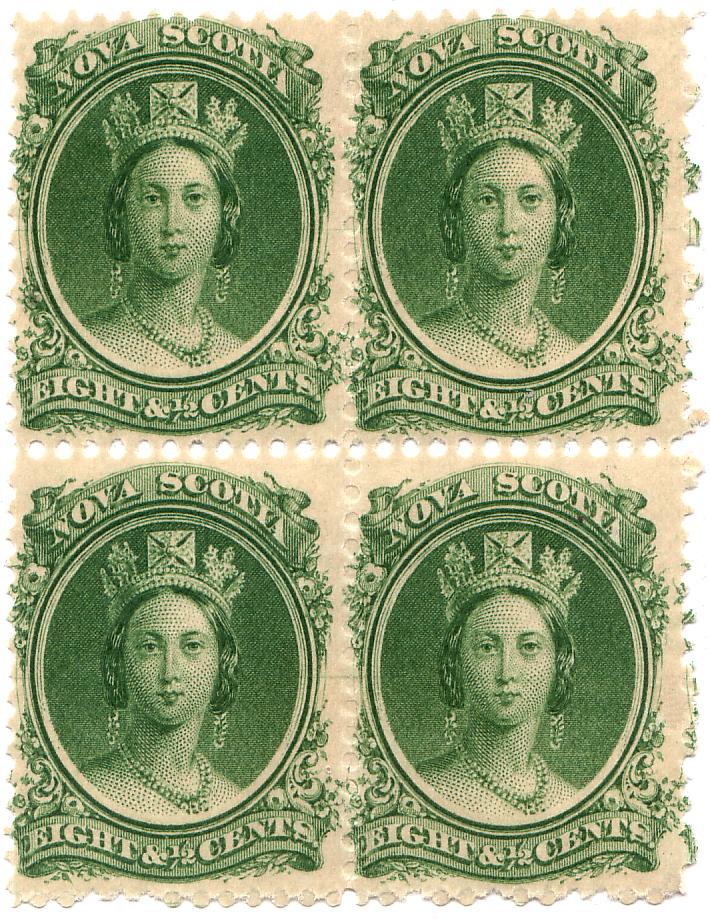
Nova Scotia 8½-cent postage stamp, first issued 1860, 21×27mm imperfect vertical perforation Before 1860, Nova Scotia postage stamps were denominated in pence. The stamps shown above were part of the first issue of Nova Scotia stamps denominated in cents. http://www.adminware.ca/checklist/chk_rate.htm |
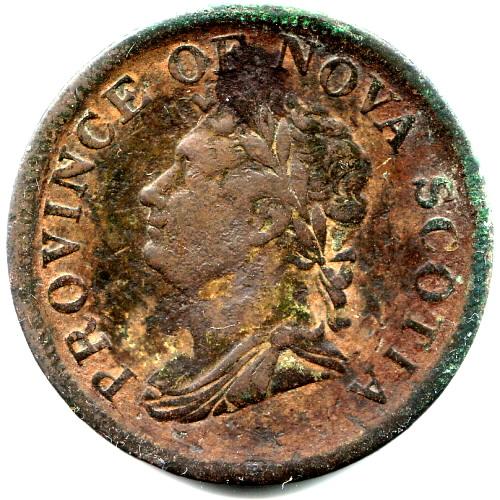
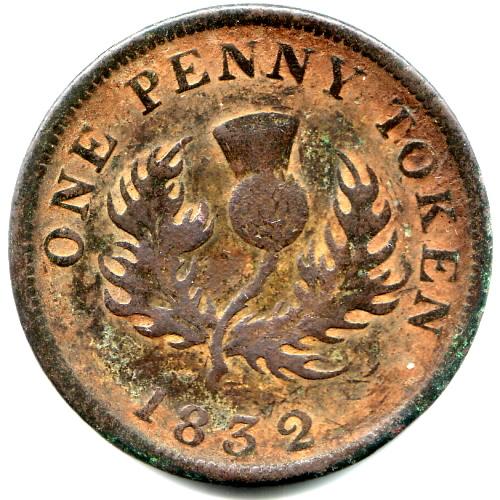
|
On His Way in the World: The Voyages and Travels of John H.R. Molson, 1841 Edited by Karen Molson and Hilbert Buist Before John Henry Robinson Molson inherited the Molson Brewery in Montreal he took a trip to Nova Scotia, Great Britain and the United States... Hilbert Buist webpage 1: Bon Voyage It was the spring of 1841 ... The four month trip would include Nova Scotia, Massachusetts, New Hampshire and Vermont... PAGE 1: Archived 2001 May 20 http://web.archive.org/web/20010520165049/http://www.magma.ca/~hilbert/pages/page1.html PAGE 1: Archived 2001 August 10 http://web.archive.org/web/20010810072257/http://www.magma.ca/~hilbert/pages/page1.html PAGE 1: Archived 2002 June 4 http://web.archive.org/web/20020604132437/http://www.magma.ca/~hilbert/pages/page1.html Hilbert Buist webpage 2: Delay in Halifax The Molsons left Quebec in the Cunard Steam Ship Unicorn, which took them to Pictou, Nova Scotia. Here they transferred to an open wagon and raced through the night through the pouring rain to Dartmouth, stopping at Truro for dinner... PAGE 2: Archived 2001 May 20 http://web.archive.org/web/20010520165049/http://www.magma.ca/~hilbert/pages/page2.html PAGE 2: Archived 2001 June 16 http://web.archive.org/web/20010616103151/http://www.magma.ca/~hilbert/pages/page2.html PAGE 2: Archived 2001 November 4 http://web.archive.org/web/20011104201825/http://www.magma.ca/~hilbert/pages/page2.html Hilbert Buist webpage 3: R.M.S. Britannia PAGE 3: Archived 2001 May 20 http://web.archive.org/web/20010520165049/http://www.magma.ca/~hilbert/pages/page3.html PAGE 3: Archived 2001 June 16 http://web.archive.org/web/20010616103654/http://www.magma.ca/~hilbert/pages/page3.html PAGE 3: Archived 2001 November 4 http://web.archive.org/web/20011104203751/http://www.magma.ca/~hilbert/pages/page3.html PAGE 3: Archived 2002 January 21 http://web.archive.org/web/20020121202245/http://www.magma.ca/~hilbert/pages/page3.html Hilbert Buist webpage 4: On His Way in the World He arrived home September 5, 1841... PAGE 4: Archived 2002 January 21 http://web.archive.org/web/20020121202057/http://www.magma.ca/~hilbert/pages/page4.html PAGE 4: Archived 2002 February 7 http://web.archive.org/web/20020207234157/http://www.magma.ca/~hilbert/pages/page4.html PAGE 4: Archived 2002 June 4 http://web.archive.org/web/20020604133408/http://www.magma.ca/~hilbert/pages/page4.html |
|
Shubenacadie Canal Lock #5, 1826-1855 Wellington, Halifax County (formerly at http://www.gov.ns.ca/homa/muns/hert/indhert/shubie.htm) has disappeared from the government's website but the Wayback Machine has archived copies: http://web.archive.org/web/19991223003945/http://www.gov.ns.ca/homa/muns/hert/indhert/shubie.htm Archived: 2000 June 5 http://web.archive.org/web/20000605221726/http://www.gov.ns.ca/homa/muns/hert/indhert/shubie.htm Archived: 2000 August 17 http://web.archive.org/web/20000817012600/http://www.gov.ns.ca/homa/muns/hert/indhert/shubie.htm |
|
Pictou Iron Foundry, 1855 Pictou (formerly at http://www.gov.ns.ca/homa/muns/hert/indhert/pictou.htm) has disappeared from the government's website but the Wayback Machine has archived copies: http://web.archive.org/web/19991222224718/http://www.gov.ns.ca/homa/muns/hert/indhert/pictou.htm Archived: 2000 June 15 http://web.archive.org/web/20000615165951/http://www.gov.ns.ca/homa/muns/hert/indhert/pictou.htm Archived: 2000 August 17 http://web.archive.org/web/20000817012605/http://www.gov.ns.ca/homa/muns/hert/indhert/pictou.htm |
|
Chignecto Marine Railway, 1888-1891 Chignecto Isthmus, Cumberland County (formerly at http://www.gov.ns.ca/homa/muns/hert/indhert/chignect.htm) has disappeared from the government's website but the Wayback Machine has archived copies: http://web.archive.org/web/19991222003922/http://www.gov.ns.ca/homa/muns/hert/indhert/chignect.htm Archived: 2000 March 9 http://web.archive.org/web/20000309144929/http://www.gov.ns.ca/homa/muns/hert/indhert/chignect.htm Archived: 2000 August 17 http://web.archive.org/web/20000817012549/www.gov.ns.ca/homa/muns/hert/indhert/chignect.htm |
|
Moirs Hydroelectric Power Plant, 1931 Bedford, Halifax County (formerly at http://www.gov.ns.ca/homa/muns/hert/indhert/moirs.htm) has disappeared from the government's website but the Wayback Machine has archived copies: http://web.archive.org/web/20000226085418/http://www.gov.ns.ca/homa/muns/hert/indhert/moirs.htm Archived: 2000 June 15 http://web.archive.org/web/20000615112143/http://www.gov.ns.ca/homa/muns/hert/indhert/moirs.htm Archived: 2000 August 17 http://web.archive.org/web/20000817012609/http://www.gov.ns.ca/homa/muns/hert/indhert/moirs.htm |
|
LeNoir Forge, late 1700s Arichat, Richmond County (formerly at http://www.gov.ns.ca/homa/muns/hert/indhert/lenoir.htm) has disappeared from the government's website but the Wayback Machine has archived copies: http://web.archive.org/web/19991222054348/http://www.gov.ns.ca/homa/muns/hert/indhert/lenoir.htm Archived: 2000 March 9 http://web.archive.org/web/20000309224425/http://www.gov.ns.ca/homa/muns/hert/indhert/lenoir.htm Archived: 2000 August 17 http://web.archive.org/web/20000817012614/http://www.gov.ns.ca/homa/muns/hert/indhert/lenoir.htm |
|
Organizational History of the Nova Scotia Department of Agriculture & Marketing (formerly at http://agri.gov.ns.ca/history.htm) has disappeared from the government's website but the Wayback Machine has archived copies: http://web.archive.org/web/19970619223719/http://www.nsac.ns.ca/nsdam/history.html Archived: 1999 May 6 http://web.archive.org/web/19990506112320/http://agri.gov.ns.ca/history.htm |
![]() Ottawa: Federal Government Orders in Council 1867-1882
Ottawa: Federal Government Orders in Council 1867-1882
http://www.collectionscanada.ca/02/020157_e.html
OIC 1871-1453, page 1
Subject: Minister of Public Works recommends changing the name of the Nova Scotia Railway station "now known as Coal Mines" to Stellarton, the local authorities and the Post Office and the Telegraph Company having already adopted that name...
Approved: 27 October 1871
OIC 1870-1172, page 1
OIC 1870-1172, page 2
OIC 1870-1172, page 3
Subject: Minister of Public Works recommending appointments on Nova Scotia Railway, viz. as station master and telegraph operators - William McCallum (first at Bedford, then at Elmsdale), Thomas M. Boggs (at Brookfield), M. Munford Jr. (at Ellershouse), Walter Sweet (at Newport), George F. Boggs (at Bedford) and Andrew M. Davidson (at West River)...
Approved: 18 February 1870
OIC 1877-0997, page 1
OIC 1877-0997, page 2
Subject: Appointment of Captain Nelson Card as lighthouse keeper at Isle Haute, Bay of Fundy, at $500.00 per annum...
Approved: 12 November 1877
OIC 1868-0961, page 1
OIC 1868-0961, page 2
OIC 1868-0961, page 3
Subject: Approval of payment of $2,700 to pay the steamship Linda for "maintaining communication between St. John, New Brunswick and Yarmouth, Nova Scotia," for the Post Office, having performed twenty-seven weekly trips at $100 per trip...
Approved: 19 November 1868
OIC 1874-1308, page 1
Subject: Approval of $6000 for the purchase of Bunkers Island near Yarmouth, Nova Scotia, for the purpose of constructing a Quarantine Station and Marine Hospital...
Approved: 5 November 1874
OIC 1879-0951, page 1
OIC 1879-0951, page 2
OIC 1879-0951, page 3
OIC 1879-0951, page 4
OIC 1879-0951, page 5
OIC 1879-0951, page 6
OIC 1879-0951, page 7
Subject: Telegraph line between Halifax and Canso – acceptance of the tender of the Dominion Telegraph Company to build and maintain "in perpetuity" a one-wire electric telegraph line between Halifax and Canso along the Eastern Shore Road...
Approved: 28 June 1879
OIC 1883-1311, page 1
OIC 1883-1311, page 2
OIC 1883-1311, page 3
OIC 1883-1311, page 4
OIC 1883-1311, page 5
OIC 1883-1311, page 6
Subject: Incorporation of The Yarmouth Power Knitting Company Limited, Yarmouth, Nova Scotia, for the purpose of manufacture and sale of all kinds of knitted hosiery and underwear... The capital stock of the Company to be $12,000... Abel C. Robbins, Hugh Currie, William A. Chase, James B. Kinney and Alexander L. Kerr to be the first directors of the Company...
Approved: 5 June 1883
OIC 1883-1789, page 1
OIC 1883-1789, page 2
OIC 1883-1789, page 3
OIC 1883-1789, page 4
Subject: Incorporation of The Yarmouth Duck and Yarn Company Limited, Yarmouth, Nova Scotia, for the purpose of manufacturing, spinning, weaving, dyeing, bleaching, printing, buying and selling of cotton, cotton duck, twine... The capital stock of the Company to be $150,000... William D. Lovitt, Samuel Killam, Abel C. Robbins, Frank Killam, Bowman Corning, Thomas E. Kelley and John Oldfield to be the first directors of the Company...
Approved: 18 August 1883
OIC 1881-1248, page 1
OIC 1881-1248, page 2
OIC 1881-1248, page 3
OIC 1881-1248, page 4
Subject: Incorporation of The Nova Scotia Glass Company Limited, New Glasgow, Nova Scotia, for the purpose of manufacturing, selling and dealing in all kinds of glass ware... The capital stock of the Company to be $50,000... Andrew Walker, Adam Carr Bell, James Eastwood, Graham Fraser and Peter A. McGregor to be the first directors of the Company...
Approved: 7 September 1881
OIC 1882-1422, page 1
OIC 1882-1422, page 2
OIC 1882-1422, page 3
OIC 1882-1422, page 4
OIC 1882-1422, page 5
Subject: Incorporation of The Nova Scotia Steel Company Limited, New Glasgow, Nova Scotia, for the purpose of making steel from scrap steel, scrap iron and pig iron... The capital stock of the Company to be $160,000... James D. McGregor, Graham Fraser, James M. Carmichael, John F. Stairs, and Henry S. Poole to be the first directors of the Company...
Approved: 12 July 1882
|
Lost At Sea Sheevaun Nelson's website Archived: 1999 January 28 http://web.archive.org/web/19990128191519/http://www.geocities.com/Heartland/Prairie/7527/ Archived: 1999 October 10 http://web.archive.org/web/19991010173349/http://www.geocities.com/Heartland/Prairie/7527/ Archived: 2001 April 3 http://web.archive.org/web/20010403225145/http://www.geocities.com/Heartland/Prairie/7527/ Archived: 2001 June 5 http://web.archive.org/web/20010605021155/http://www.lostatsea.ca/ Archived: 2001 July 20 http://web.archive.org/web/20010720100450/http://www.geocities.com/Heartland/Prairie/7527/ Archived: 2001 September 22 http://web.archive.org/web/20010922012239/http://www.lostatsea.ca/ Archived: 2002 January 24 http://web.archive.org/web/20020124183320/http://www.lostatsea.ca/ Archived: 2002 May 27 http://web.archive.org/web/20020527175919/http://www.lostatsea.ca/ |
The Eddy Rebellion
| |||
Jonathan EddyEddy, Jonathan, farmer, soldier; born 1726/27 at Norton, Massachusetts, son of Eleazer E. and Elizabeth (Cobb) Eddy; married 4 May 1749 to Mary, daughter of Dr. William Ware; came to Cumberland, Nova Scotia, in 1763, after serving as captain in the Seven Years' War; deputy provost marshal of Cumberland County; first magistrate on the Penobscot River; Member of the Nova Scotia Legislative Assembly for Cumberland Township, 1770-1775; leader in the rebellion in Cumberland in 1776; served as colonel in the American Revolutionary forces, living at Sharon, Massachusetts; in 1781 granted land at Eddington, Maine, where he died in August, 1804.Source: The Legislative Assembly of Nova Scotia 1758-1983: A Biographical Directory, edited and revised by Shirley B. Elliott, 1984, ISBN 088871050X. This volume was prepared as a contribution of the Public Archives of Nova Scotia to the celebration of the bicentenary of the establishment of representative government in Canada. Note...a certain John Eddy was indicted by the grand jury for treason, but escaped before he could be brought to trial. The principal offense was that of enlisting men for the British service.Source: Footnote 90 in Volume 7 of The Writings of George Washington from the Original Manuscript Sources, 1745-1799, 39 volumes, John C. Fitzpatrick, Editor, Washington, D.C.: Government Printing Office, 1931-1944; reprint, New York: Greenwood Press, 1970 This John Eddy is not to be confused with Jonathan Eddy, a resident of Cumberland County, Nova Scotia, in the 1760s and 1770s, and a Member of the Nova Scotia Legislative Assembly for Cumberland Township, 1770-1775. From the beginning, Jonathan Eddy supported the revolutionary side in the war, and certainly did not enlist men for the British service. | |||
If Eddy had succeeded...(In 1776) we had civil unrest at Fort Cumberland when Colonel Jonathan Eddy of the Continental Army tried to foment an uprising on behalf of the American revolution among the New England settlers who replaced the French Acadians. If Eddy had succeeded, and he might very well have, Canada today would not have an Atlantic coast...— Mrs. Dianne Brushett (MP for Cumberland-Colchester): House of Commons, Ottawa — Hansard, 27 January 1994 http://collection.nlc-bnc.ca/100/201/301/ hansard-e/35-1/009_94-01-27/009GO3E.html#506 http://ace.acadiau.ca/history/plstcntr.htm Migration from New England, 1759-1774 The Colony of Nova Scotia stood on New England's frontier during the tumultuous time of the Seven Years' War (1756-1763) between England and France over their North American Empires. Between 1760 and 1774, approximately 8000 Planters (colonists) from Connecticut, Massachusetts, Rhode Island, and New Hampshire came to Nova Scotia, bringing with them their own culture, a mixture of Old World traditions and New World adjustments... http://ace.acadiau.ca/history/plmigrat.htm http://heritage.tantramar.com/history.html Fort Beausejour is a star-shaped fort built in 1750-51 by by order of Marquis de la Jonquiere, Governor of Canada, in the course of the French struggle with the British for possession of Acadia (Nova Scotia). Fort Beausejour was taken by Lt. Col. Robert Monckton with volunteers from New England, known as Shirley's Regiment, raised by Lt. Col. John Winslow, aided by men of the Royal Artillery, and other British troops, after a two-week siege, June 3-16, 1755. Renamed Fort Cumberland. Besieged by rebels under Jonathan Eddy, November 4-24, 1776. Defended by the Royal American Fencible Regiment under Lt. Col. Joseph Gorham and relieved by Major Thomas Batt with a body of Royal Marines and Royal Highland Emigrants, who routed the besiegers. Source: http://parkscanada.pch.gc.ca/parks/new_brunswick/fort_beausejour/fort_beausejour_e.htm (For some unknown reason, Parks Canada has deleted this.) http://acadian-home.org/acadians-beausejour.html For a time, in 1775-76, it appeared that Nova Scotia (which then included present day New Brunswick) might be the fourteenth colony to rebel ... In Cumberland Township (now Cumberland County, Nova Scotia) local leadership for the revolutionary cause was provided by its two MLAs, John Allan (1746-1805) and Jonathan Eddy (1726-1804). The uprising known as Eddy's Rebellion reached its peak in November of 1776... Source: http://www.tantramar.com/trib/2001/05/09/columns.html
The Christmas season was anything but merry on the Tantramar in 1776. During the previous autumn this region had been directly involved in the American Revolution. Although the Eddy Rebellion was over, its impact was still in evidence. The remains of torched homes and farm buildings could be found throughout the countryside. Desperation and starvation lined the faces of many homeless refugees (from both sides) who were huddled in Fort Beausejour, now renamed Fort Cumberland... Source: http://www.tantramar.com/trib/2001/12/19/columns.html
a column from the Yarmouth Vanguard http://www.geocities.com/heartland/meadows/2700/story28.htm http://cumberlandcounty.ns.ca/recreation/flbha/history/index.htm The Townships of Sackville, Cumberland and Amherst were laid out in 1763 each containing 100,000 acres (Cumberland Township disappeared and was replaced by Amherst Township in 1783) ... The first shipload of Yorkshire immigrants to arrive was in 1772 ... The Chignecto Isthmus felt the greatest impact of the immigration. Settling at Amherst were: Black, Freeze, Robinson, Lusby, Oxley, Foster and others; at Nappan, Maccan, River Philip: Brown, Ripley, Shepley, Pipes, Coates, Harrison, Fenwick and others: Westmorland Point, Point de Bute and Fort Lawrence: Keilor, Siddall, Wells, Smith Lowerson, Truemen, Chapman, Donkin (actually from Northumberland), Read, Carter, King, Trenholm, Dobson and others; and at Sackville: Dixon, Bowser, Atkinson, Anderson, Bulmer, Harper, Patterson, Fawcett, Richardson, Humphrey, Wry, and others. Aside from the Chignecto region up to 15% of the families settled in Annapolis County and included the names: Clark, Wilson, Oliver, Milner, Mills, Halliday, Jefferson and others. The settlement generally known as "the Yorkshire Immigration" has had a profound effect on settlement patterns in eastern Canada, and may have significantly contributed to the political landscape of the Maritimes. Loyal Yorkshiremen helped British forces at Fort Cumberland (now Fort Beausejour National Historic Park) quell the Eddy Rebellion of 1776... http://ayup.co.uk/knows/knows11.html
There were nine members during this time for Cumberland County and Cumberland Township. Their chief claim to fame seemed to be non-attendance and one of them, Jonathon Eddy, was dismissed from the House for becoming "a rebble". This was true ... It was claimed that one of the causes of poor attendance was the almost impossible task of getting to Halifax. The Halifax authorities claimed the main reason was the "rebellious nature" of the Cumberland inhabitants. There was, however, a small rebellion commonly called the "Eddy Rebellion" in 1776... http://www.ccgs.ednet.ns.ca/cumb/cumbco.htm http://www.geocities.com/Heartland/Acres/2957/depost.htm http://www.rootsweb.com/~mekenneb/resources/stateof.html http://www.calaisalumni.org/Maine/2dyer.htm http://www.eddyfamily.com/EFHA%20Info.htm | |||
Howard Trueman's book
| |||
Continental Congress Considers the Plight
Congress assembled. Present, New Hampshire, Rhode Island, Connecticut, New York, New Jersey, Pennsylvania, Delaware, Maryland, Virginia, North Carolina and South Carolina; and from the State of Massachusetts, Mr. [Rufus] King, and from Georgia, Mr. [William] Houstoun...
| |||
The Eddy Rebellion: Ink-on-Paper ReferencesPapers relating to Trials for Treason in 1776-7, The Nova Scotia Historical Society, #1 (1878) — The Eddy Rebellion; eight pagesThe Siege of Fort Cumberland, 1776: An Episode in the American Revolution, by Ernest Clarke, 304 pages, published 1995 by McGill-Queen's University Press, Montreal & Kingston, ISBN 0773518673, ISBN 077351323X; — A detailed account of the 1776 siege and the events leading up to it Footprints in the Marsh Mud: Politics and Land Settlement in the Township of Sackville 1760-1800, by James D. Snowdon, M.A. thesis, University of New Brunswick, 1974; reprinted, Tantramar Heritage Trust, 2000 — pages 74-80: the Eddy rebellion A Century at Chignecto: The Key to Old Acadia, by William Richard Bird, Ryerson Press, Toronto, 1928 — Chapters VI-XVI: the events of 1750-1755, and the Eddy Rebellion of 1776 Dictionary of Canadian Biography, Vol.IV, pages 540-542 — Lt. Col. Robert Monckton (1726-1782) Dictionary of Canadian Biography, Vol.V, pages 295,296 — Jonathan Eddy (1726-1804) Memoir of Colonel Jonathan Eddy, of Eddington, Maine: With Some Account of the Eddy Family, and of the Early Settlers on Penobscot River by Joseph W. Porter, published 1877 by Sprague, Owen & Nash, Augusta, Maine, 73 pages History of Penobscot County, Maine, with Illustrations and Biographical Sketches (1617-1882) (edited by Henry A. Ford?) published 1882 by Williams, Chase & Co., Cleveland, Ohio, 922 pages Military Operations in Eastern Maine and Nova Scotia During the Revolution, chiefly compiled from the journals and letters of Colonel John Allan, with notes and a memoir of Col. John Allan by Frederic Kidder, 336 pages, published 1867 by Joel Munsell, Albany, New York; reprinted 1971 by Kraus Reprint Co., Millwood, New York; reprinted 1997 ISBN 0832854581, 336 pages, by Higginson Book Company Sketch of Col. John Allan of Maine, by George H. Allan, New England Historical and Genealogical Register, July 1876, pages 353-359 Narrative of Col. John Allan, edited by Peter E. Vose, New England Historical and Genealogical Register, July 1858, pages 254-257 The Neutral Yankees of Nova Scotia, A Marginal Colony During The Revolutionary Years by John Bartlet Brebner, 387 pages with fold-out map, published 1937 by Columbia University Press, New York (reprinted 1970 by McClelland and Stewart, Toronto ?) Machias And the Invasion of Nova Scotia, by Daniel Cobb Harvey (1886-1966), 14-page phamphlet; reprinted from the Annual Report of the Canadian Historical Association, 1932, pages 17-28 Nova Scotia in the Critical Years, 1775-76 by Wilfred Brenton Kerr, The Dalhousie Review, Vol. 12, 1932 The Maritime Provinces of British North America and the American Revolution by Wilfred Brenton Kerr, published 1941 by Busy East Press, Sackville, N.B.; reprinted 1970 by Russell & Russell Inc., New York (a division of Atheneum House Inc.) 172 pages The American Invasion of Nova Scotia, 1776-77 by Wilfred Brenton Kerr, Canadian Defense Quarterly, July 1936, pages 433-445 Bermuda and the American Revolution: 1760-1783 by Wilfred Brenton Kerr, published 1936 by Princeton University Press, New Jersey, 142 pages; reprinted 1969 by Archon Books The American Revolution and Nova Scotia Reconsidered by George A. Rawlyk, Dalhousie Review, Autumn 1963, pages 379-394 Revolution Rejected, 1775-1776 George A. Rawlyk editor, published 1968 by Prentice-Hall of Canada, Scarborough, Ontario Nova Scotia's Massachusetts: a study of Massachusetts - Nova Scotia relations, 1630 to 1784 by George A. Rawlyk, 298 pages, ISBN 0773501428, published 1973 by McGill University Press, Montreal, and Queen's University Press, London, Ontario A People Highly Favoured of God: the Nova Scotia Yankees and the American Revolution by Gordon Stewart and George Rawlyk, 219 pages, ISBN 770508669, published 1972 by Macmillan, Toronto New Ireland: Loyalists in Eastern Maine During the American Revolution, by Robert Wesley Sloan, Ph.D. Dissertation, Michigan State University, 1971 Note about "New Ireland": In the last months of the War of 1812 the English troops held all the land in Maine east of the Penobscot River and administered the civil government from Bangor. England proposed to make of this conquest a separate province of the Canadian government, and to call it New Ireland. When the Treaty of Ghent was signed, however, Hinckley and the rest of eastern Maine were returned to the United States. Source: "Hinckley Township or Grand Lake Stream Plantation" by Minnie Atkinson, 1920 http://outdoors.mainetoday.com/forgotten/excerpt.htm New England Rubicon: A Study of Eastern Maine During the American Revolution, by John Howard Ahlin, Ph.D. Dissertation, Boston University, 1962 The Forts of Chignecto: A Study of the Eighteenth Century Conflict Between France and Great Britain in Acadia by John Clarence Webster, 196 pages, 400 copies published 1930 by the author, Shediac, N.B.; now (2002) available as a print-to-order reprint History in a Government House: a Study of Those Who Administered the Government of Acadia and That of Nova Scotia Until 1784 — Read Before the Nova Scotia Historical Society 1 April 1926 by John Clarence Webster, 16 pages, published 1926 by the author, Shediac, N.B. Canada and the American Revolution: The Disruption of the First British Empire by George M. Wrong, 511 pages, published 1935 by Macmillan, New York; reprinted 1968 ISBN 0815402619 by Cooper Square Publishers; reprinted ISBN 0781248752 by Reprint Services Corporation Privateering and Piracy: The Effects of New England Raiding Upon Nova Scotia During the American Revolution, 1775-1783, by John Dewar Faibisy, Ph.D. Dissertation, University of Massachusetts, 1972 Acadia in the Revolution, by George J. Varney, Magazine of American History, July 1882, pages 486-495 Nova Scotia and New England During the Revolution, by Emily P. Weaver, American Historical Review, October 1904, pages 52-71 A history of Tatamagouche, Nova Scotia by Frank H. Patterson, 143 pages, published 1917 by Royal Print & Litho, Halifax; reprinted 1973 by Mika Publishing Co., Belleville, Ontario Acadia: The Geography of Early Nova Scotia to 1760 by Andrew Hill Clark, 470 pages with maps, published 1968 by University of Wisconsin Press, Madison, Wisconsin; reprints available in 2002 ISBN 0835760006 from Books On Demand Journal of Abijah Willard by Abijah Willard, edited by John Clarence Webster, 75 pages, New Brunswick Historical Society, [1930?], Saint John, N.B. [Abijah Willard was an officer in the expedition which captured Fort Beausejour in 1755. Abijah Willard, Esq., was named in the Banishment Act of the State of Massachusetts, September 1778.] |
|
Unpublished Manuscripts... Archived: 2001 May 3 http://web.archive.org/web/20010503053156/http://www.wcr.library.ns.ca/banks/unpublis.htm Archived: 2001 August 14 http://web.archive.org/web/20010814215607/http://www.wcr.library.ns.ca/banks/unpublis.htm Archived: 2002 June 6 http://web.archive.org/web/20020606080013/http://www.wcr.library.ns.ca/banks/unpublis.htm |
John Allan
Allan, John, farmer, merchant; born 3 January 1746 at Edinburgh Castle, Scotland; son of William and Isabelle (Maxwell) Allan; married 10 October 1767 to Mary, daughter of Mark Patton; elected Member of the Nova Scotia Legislative Assembly for Cumberland Township in by-election, took seat 30 October 1775; seat declared vacant 28 June 1776 for non-attendance; served as clerk of the Sessions; Justice of the Peace, sheriff, clerk of the Supreme Court; later became a soldier in the American Revolutionary Army. As a participant in the Eddy Rebellion he fled from Cumberland County in August 1776 for political reasons; died 7 February 1805, in Maine.
|
|
to the Penobscot River from becoming Canadian territory One Hundred and Twentieth Maine LegislatureFirst Regular Session
|
On May 29th, 1776, John Allan learned that the HMS Vulture had returned to Annapolis, Nova Scotia. So on May 30th Allan set out from Machias, Maine, with a party of forty-three men. Allan was joined by thirteen canoes of men at Musquash Cove ... When the authorities in Halifax heard of this they sent the warship HMS Mermaid and the sloops HMS Hope and a detachment of soldiers to repel the American force... http://www.geocities.com/Heartland/Ranch/9002/war.htm ...The style of argument used to induce the natives from their allegiance to the King of England is seen in the letter addressed to them by the congress of Massachusetts on May 15th, 1775 ... The most active agent the Americans had at this time was one John Allan who formerly resided in the eastern part of what is now Westmorland County in New Brunswick ... About this time the Governonr of Nova Scotia sent Col. Arthur Goold to the River St. John to engage the Indians either to remain neutral or to assist in the defence of Nova Scotia... http://personal.nbnet.nb.ca/halew/Raymond28.html |
Continental CongressApril 21st, 1785The petition of John Allan, Supt. of Indian Affairs, Eastern Department, praying compensation for services and expences, was referred to the Board of Treasury to report. [Note: The Board reported June 7, 1785. The petition, dated April 20, 1785, is in No. 42, I, folio 79.]Source: Journal of the Continental Congress, 1774-1789 Historical Collections for the U.S. National Digital Library http://memory.loc.gov/ Continental CongressJune 6th, 1785Board of Treasury, June 6th 1785.The Board of Treasury to whom was referred the petition of John Allan Esq. late Superintendant of Indian affairs for the eastern department, Report. That in the opinion of the Board, the Commission held by John Allan Esq. late Superintendant of Indian affairs for the eastern department, under the authority of Congress, can only be considered as a civil commission, and therefore that his claim for the emoluments granted to officers in the military line of the United States cannot be admitted. With respect to the claims made by the Petitioner for his wages as Superintendant of Indian affairs from the 3d of June, 1783, till his dismission, and that the sum due on the certificate granted to him under the administration of the late Superintendant of finance, on the 4th June, 1783, should be discharged. The Board considering the pretensions of Mr Allan, as founded on the same basis with other civil officers of the United States submit to the consideration of Congress the following Resolve, That the sum of eight hundred and seventy dollars 45/90 be paid to John Allan late Superintendant of Indian affairs June 13, passed for the Eastern department being the amount of his salary from the 3d June, 1783, till the 1st May, 1784, the time he received intelligence of his dismission from service. That the Registers certificate given to John Allan Postponed 13 June; 17 June assigned the 4th. June, 1783, for three thousand four hundred and ninety four dollars being the balance due him for past services to that period be paid and cancelled out of the requisition for the year 1784. [Note: This report is in the Papers of the Continental Congress, No. 138, 1, folio 75. Allan's petition is in No. 42, I, folio 79.] Source: Journal of the Continental Congress, 1774-1789 Historical Collections for the U.S. National Digital Library http://memory.loc.gov/ Continental Congress Pays John Allan
|
The American Revolution
|
|
Pictou During the American Revolution Archived: 1997 May 8 http://web.archive.org/web/19970508083201/www.rootsweb.com/~pictou/picrev.htm Archived: 1999 January 28 http://web.archive.org/web/19990128120808/http://www.rootsweb.com/~pictou/picrev.htm Archived: 1999 October 9 http://web.archive.org/web/19991009103348/http://www.rootsweb.com/~pictou/picrev.htm Archived: 2000 March 5 http://web.archive.org/web/20000305015325/http://rootsweb.com/~pictou/picrev.htm Archived: 2000 October 13 http://web.archive.org/web/20001013235809/http://www.rootsweb.com/~pictou/picrev.htm Archived: 2001 June 28 http://web.archive.org/web/20010628024036/http://rootsweb.com/~pictou/picrev.htm Archived: 2001 November 24 http://web.archive.org/web/20011124155628/http://www.rootsweb.com/~pictou/picrev.htm |
War of 1812
| |||||||||||||||||||||||||||||||||||||||||||||||||||||||||||||||||||||||||
|
To Great Britain the War of 1812 was simply a burdensome adjunct of its greater struggle against Napoleonic France. To the Canadians it was clearly a case of naked American aggression. But to the Americans it was neither simple nor clear. The United States entered the war with confused objectives... Source: Chapter 6: The War of 1812 American Military History, Army Historical Series Office of the Chief of Military History, United States Army |
|
The information below was compiled by William James from contemporary accounts |
||
|---|---|---|
|
Naval Actions |
||
| USS Constitution | HMS Guerriere | 19 August 1812 |
| USS Wasp | HMS Frolic | 18 September 1812 |
| USS United-States | HMS Macedonian | 25 October 1812 |
| USS Constitution | HMS Java | 28 December 1812 |
| USS Hornet | HMS Peacock | 24 February 1813 |
| USS Chesapeake | HMS Shannon | 1 June 1813 |
| USS Argus | HMS Pelican | 14 August 1813 |
| USS Enterprise | HMS Boxer | 5 September 1813 |
| USS Essex | HMS Phoebe | 28 March 1814 |
| USS Frolic | HMS Orpheus | 20 April 1814 |
| USS Peacock | HMS Epervier | 29 April 1814 |
| USS Wasp | HMS Reindeer | 28 June 1814 |
| USS Wasp | HMS Avon | 1 September 1814 |
| USS President | HMS Endymion | 15 January 1815 |
| USS Constitution | HMS Levant & Cyane | 20 February 1815 |
| USS Hornet | HMS Penguin | 23 March 1815 |
| USS Peacock | HEICS Nautilus | 30 June 1815 |
|
HEIC:
Honurable East India Company HMS: His Majesty's Ship USS: United States Ship |
||
|
Privateer Actions |
||
| Saratoga | Rachel | 11 December 1812 |
| Decatur | HMS Dominica | 5 August 1813 |
| Chasseur | HMS St. Lawrence | 26 February 1815 |
|
Fifteen Minutes in History: the Shannon and the USS Chesapeake Archived: 2000 September 29 http://web.archive.org/web/20000929172553/http://millennium.ns.sympatico.ca/tallships/tallships_shannon.html Archived: 2001 July 24 http://web.archive.org/web/20010724053920/http://millennium.ns.sympatico.ca/tallships/tallships_shannon.html Archived: 2002 December 30 http://web.archive.org/web/20021230045336/http://www.millennium.ns.sympatico.ca/tallships/tallships_shannon.html |
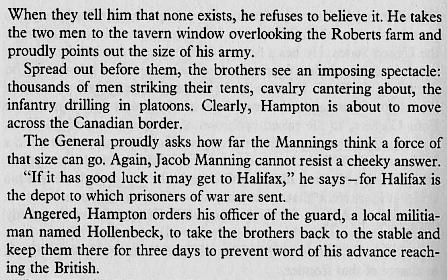
Note by ICS: This is found in Pierre Berton's two-volume History of the War of 1812. In the entire two volumes, this is the only mention of Halifax or Nova Scotia, or of any of the events that occurred on the North Atlantic Ocean during 1812-1814. This single sentence is found in Berton's description of a minor encounter on the border between Quebec and New York state — someone in Quebec making a jocular passing reference. I have great respect for Pierre Berton; he is a marvellous story-teller who has done more than anyone else to make Canadians more aware of their own history, but in his History of the War of 1812 he completely overlooked that part of the war that occurred on the east coast. There is no mention of the capture of Bangor, or Castine, or any other event in Maine. One could ask: just how successful would the defenders of Canada West and Canada East have been without the supplies and reinforcements sent from Britain across the Atlantic during 1812-1814? The United States government was fully aware of the importance of this transatlantic supply line, and assigned substantial resources to an effort to establish an effective blockade to prevent supply ships from reaching the St. Lawrence River. Without the naval base at Halifax, the American blockade would have far more effective, and crucial supplies and thousands of soldiers would have been prevented from reaching the defenders of Central Canada.
This is found on page 218 of volume two "Flames Across the Border 1813-1814" of Berton's history of the War of 1812. Volume one, "The Invasion of Canada, 1812-1813" contains not a single word about events associated with east coast or the transatlantic supply line during this time.
The high degree of concentration of Canadian doctoral studies [in history] in a few universities gave a disproportionate influence in the discipline to a small group of distinguished scholars from these institutions... Within the Canadian field... more than half of all the doctoral theses in progress in 1967 were directed by eight men. Of these, three were at Toronto, two at Laval, two at Western, and one at McGill... Geographically, nearly five out of six candidates were in Toronto, Quebec, Montreal, and London. The remainder were sprinkled in niggardly fashion at Vancouver, Edmonton, and in several tiny programmes, none having as many as five candidates. There appears to have been no effective programme in the Atlantic provinces...
(Bold-faced emphasis added)
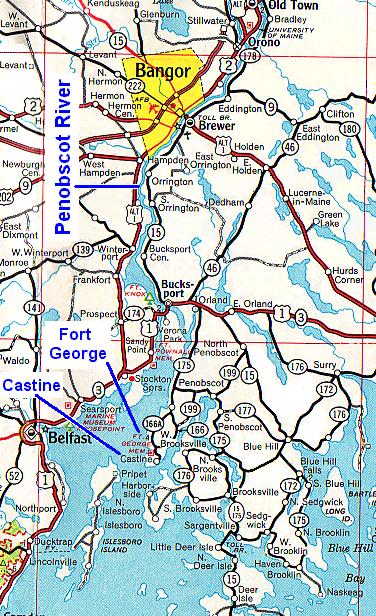
The Penobscot River (above) was the
western boundary of Nova Scotia, 1763-1783.
|
Probably the most unusual source of funding for any Canadian college was that of Dalhousie University, which was founded in 1818 under the name of College of Halifax. A large portion of its original endowment came from customs duties collected at Castine, now in the State of Maine but then in Massachusetts, while that port was occupied during the War of 1812 by a British force based in Halifax, Nova Scotia. |
|
Nova Scotia Loyalist Pages Archived: 1997 April 1 http://web.archive.org/web/19970401034306/http://www.buckingham-press.com/loyalist.html Archived: 1997 April 15 http://web.archive.org/web/19970415221316/http://www.buckingham-press.com/loyalist.html |
American Civil War
|
|
the Confederate States and the Union Government December 1863 Note: The ship Chesapeake involved in this action is not the Chesapeake that was captured by HMS Shannon in 1813. The Chesapeake Affair (1863) The Halifax British Colonist, 22 December 1863 The excitement in Halifax on Saturday last exceeded anything witnessed here for some time. It was only during the morning of that day that the fact became generally known that three men had been illegally seized by the officers of the Federal (United States) gunboats in port... http://www.collectionscanada.ca/2/18/h18-252-e.html The Chesapeake Department of the Navy – Naval Historical Center, Washington Navy Yard, Washington DC Chesapeake was the wooden steamer Totten, built in Philadelphia in 1853 and first registered there. In 1857, Totten was rebuilt and renamed Chesapeake – owned by a New York shipping company, it was described at that time as schooner-rigged with single funnel... On 7 December 1863, Chesapeake was captured by a group acting in the name of the Confederacy under alleged authority of a second-hand letter of marque issued 27 October to the former captain of a privateer sold as unseaworthy in Nassau some months earlier... On 12 December 1863, Chesapeake coaled (replenished its fuel) at Shelburne, Nova Scotia, shipped four men and was seeking enough fuel to make Wilmington, North Carolina. USS Ella & Annie captured Chesapeake on the morning of the 17th, in Sambro, a small harbor near the entrance to Halifax Harbour, with three crewmen... http://www.history.navy.mil/danfs/cfa2/chesapeake.htm |
Royal William
Designed for service between Quebec and the Maritime Provinces, Royal William (named for William IV) was built for the Quebec and Halifax Steam Navigation Company, of which Samuel Cunard was a part owner. After a successful first season during which she completed three round trips between Quebec and Halifax, Royal William was quarantined in 1832 because of a cholera epidemic... http://college.hmco.com/history/readerscomp/ships/html/sh_078300_royalwilliam.htm http://www.bruzelius.info/Nautica/Ships/Royal_William.html http://www.theshipslist.com/ships/Arrivals/RoyWil33.htm http://www.mar.dfo-mpo.gc.ca/e/stmp204.htm |
|
The Blue Riband of the North Atlantic Archived: 2000 August 17 http://web.archive.org/web/20000817012114/http://user.tninet.se/~xqf528b/riband.html Archived: 2001 May 18 http://web.archive.org/web/20010518131452/http://www.greatoceanliners.net/riband.html Archived: 2002 June 14 http://web.archive.org/web/20020614190103/http://www.greatoceanliners.net/riband.html Archived: 2003 February 15 http://web.archive.org/web/20030215011106/http://www.greatoceanliners.net/riband.html |
|
Archived: 2000 August 26 http://web.archive.org/web/20000826230123/user.tninet.se/~xqf528b/riband_west.html Archived: 2002 December 22 http://web.archive.org/web/20021222054144/http://www.greatoceanliners.net/riband_west.html |
|
Archived: 2000 August 26 http://web.archive.org/web/20000826230137/user.tninet.se/~xqf528b/riband_east.html Archived: 2002 December 22 http://web.archive.org/web/20021222053841/www.greatoceanliners.net/riband_east.html |
R.M.S. Titanic
|
|
Note: Titanic was not a Cunard ship. Titanic was a White Star ship, two decades before the merger of White Star with Cunard in 1934. |
|
Titanic's Mystery Ship by the Yarmouth County Museum Archived: 1999 February 24 http://web.archive.org/web/19990224232852/http://ycn.library.ns.ca/museum/titanic/titanic.htm Archived: 1999 October 8 http://web.archive.org/web/19991008125346/http://www.ycn.library.ns.ca/museum/titanic/titanic.htm Archived: 2000 August 18 http://web.archive.org/web/20000818213521/http://ycn.library.ns.ca/museum/titanic/titanic.htm Archived: 2001 June 24 http://web.archive.org/web/20010624120911/http://www.ycn.library.ns.ca/museum/titanic/titanic.htm Archived: 2002 February 22 http://web.archive.org/web/20020222024814/http://www.ycn.library.ns.ca/museum/titanic/titanic.htm |
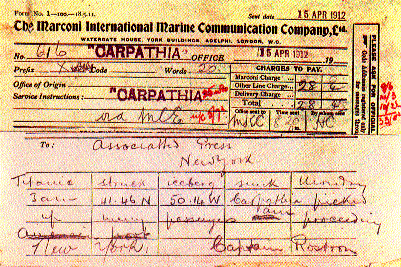
|
Role of the Mackay-Bennett in the Titanic Disaster Archived: 1999 October 11 http://web.archive.org/web/19991011195323/http://homepages.rootsweb.com/~capstick/titanic.html Archived: 2000 December 7 http://web.archive.org/web/20001207063100/http://homepages.rootsweb.com/~capstick/titanic.html Archived: 2001 April 19 http://web.archive.org/web/20010419165045/http://homepages.rootsweb.com/~capstick/titanic.html Archived: 2001 October 6 http://web.archive.org/web/20011006235226/http://homepages.rootsweb.com/~capstick/titanic.html |
|
The Cable Ship Mackay-Bennett was named for the two founders of the Commercial Cable Company, which was incorporated in New York in 1883. James Gordon Bennett (1841-1918) (the younger) was the owner of the New York Herald newspaper, having inherited it from his father James Gordon Bennett (the elder). John William Mackay (1831-1902) had made a fortune in mining after emigrating in 1840 to the United States from Ireland; in 1859 he joined the rush to Nevada, where silver had been discovered. Mackay and J.G. Fair, later joined by William Shoney O'Brien and J.C. Flood, acquired control of valuable silver mines, which yielded them great fortunes. Bennett and Mackay both used telegrams extensively in their businesses, and wished to compete with the Anglo-American Company and others, which at that time had formed a syndicate known as "The Pool", and enjoyed a near monopoly of transatlantic traffic while being able to keep telegraph rates high and profits large. The two men agreed to work together to found a new transatlantic telegraph company in 1883. The Commercial Cable Company quickly laid two undersea telegraph cables from Europe, landing the North American ends at Hazel Hill, near Canso, Nova Scotia. To maintain these cables the company kept a specially-designed cable ship, the Mackay-Bennett, in Halifax, ready to go to sea at any time on short notice if a cable failed. Source: http://epe.lac-bac.gc.ca/100/205/300/nova_scotias_electronic_attic/07-04-09/www.littletechshoppe.com/ns1625nshist17.html |
 Coal Was There for Burning, by Charles Henry Milsom (1926-1996) 88 pages
published 1975 by the Institute of Marine Engineers, London, ISBN 0900976500
Coal Was There for Burning, by Charles Henry Milsom (1926-1996) 88 pages
published 1975 by the Institute of Marine Engineers, London, ISBN 0900976500
Slaves
| ||
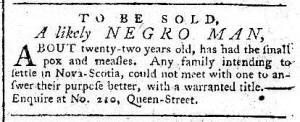
Ad in New York newspaper, July 1783 For sale: Negro Man, for Nova Scotia | ||
Nova Scotia Slave Adshttp://museum.gov.ns.ca/blackloyalists/18001900/Objects1800/runaway_lg.htm They somehow overlooked identifying this advertisement – published when? where? That's the kind of basic information one would think that an archive would be sure to include for a historic document like this.
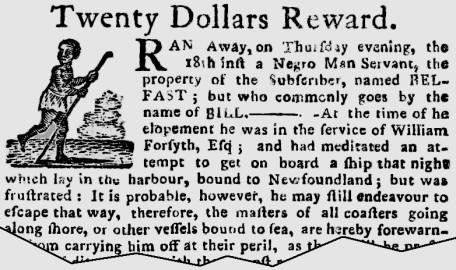
Runaway Slave Ad, Nova Scotia Halifax Weekly Chronicle, 15 March 1794 View the complete advertisement http://epe.lac-bac.gc.ca/100/205/300/nova_scotias_electronic_attic/07-04-09/www.littletechshoppe.com/ns1625slaves01.html | ||
Former Slaves in Nova ScotiaBetween 1783 and 1785, more than 3000 Black persons
| ||
Boston KingBoston King was one of the many enslaved African Americans – perhaps as many as 100,000 – who risked punishment and even death [in the 1770s] in order to reach the British lines and a chance at freedom... In 1776, British troops under the command of General Billy Howe captured New York City. The city continued to be a British stronghold for the duration of the war, and large numbers of enslaved blacks sought refuge there... Prior to the evacuation of New York, Congress instructed General Washington to obtain American property held by the British, including slaves, as stipulated under the terms of the agreement signed in Paris in November, 1782. Sir Guy Carleton, negotiating on behalf of the British, dismayed the Americans when he expressed an intention to honor the proclamations of freedom issued by previous commanders... After his conversion to Methodism in 1786, Boston King began to preach in Birchtown and Shelburne in Nova Scotia, eventually moving to Preston... http://www.chebucto.ns.ca/~ah900/tree/history.html ...the country was visited with a dreadful famine, which not only prevailed at Burch Town, but likewise at Chebucto, Annapolis, Digby and other places. Many of the poor people were compelled to sell their best gowns for five pounds of flour, in order to support life. When they had parted with all their clothes, even to their blankets, several of them fell down dead in the streets, thro' hunger. Some killed and eat their dogs and cats, and poverty and distress prevailed on every side... — Boston King http://museum.gov.ns.ca/blackloyalists/17751800/events1775/famine.htm http://museum.gov.ns.ca/blackloyalists/17751800/Objects1775/religpub_lg.htm http://collections.ic.gc.ca/blackloyalists/documents/diaries/king-memoirs.htm | ||
Legal Racial Discrimination
| ||
|
Mississippi State University /msstate.edu/ http://www.msstate.edu/listarchives/afrigeneas/199701/msg00383.html |
Joshua Slocum
|
Railwayshttp://www.parl.ns.ca/samson/index.htm Pictures of the Samson http://www.parl.ns.ca/samson/images.htm Excellent maps showing the railway travelled by the Samson http://www.parl.ns.ca/samson/route.htm http://novascotiarailwayheritage.com/index.htm Historical Nova Scotian Railway Photographs Canadian National Railway stations http://novascotiarailwayheritage.com/photos.htm Historical Nova Scotian Railway Photographs Dominion Atlantic Railway stations http://novascotiarailwayheritage.com/photos2.htm http://epe.lac-bac.gc.ca/100/205/300/nova_scotias_electronic_attic/07-04-09/www.littletechshoppe.com/ns1625railways.html |
This website was launched at a ceremony in Halifax on 6 October 1999. Senator Willie Moore was there, representing the federal Department of Industry. The provincial Department of Education was represented by Michael Jeffery, Director of Learning Resources and Technology. Both departments supported the development of this website.
[The Halifax Daily News, 7 October 1999]
|
History of Silver's Garage Bridgewater Archived: 2001 April 6 http://web.archive.org/web/20010406072404/http://www.silversgarage.ns.ca/history.htm Archived: 2002 October 4 http://web.archive.org/web/20021004040659/http://www.silversgarage.ns.ca/history.htm Archived: 2003 June 17 http://web.archive.org/web/20030617153543/http://www.silversgarage.ns.ca/history.htm |
|
Medical History Museum of Nova Scotia Archived: 1999 February 22 http://web.archive.org/web/19990222124855/http://www.chebucto.ns.ca/~ai659/Profile.html Archived: 2000 May 9 http://web.archive.org/web/20000509034614/http://www.chebucto.ns.ca/~ai659/Profile.html Archived: 2001 August 5 http://web.archive.org/web/20010805123715/http://www.chebucto.ns.ca/~ai659/Profile.html Archived: 2002 June 7 http://web.archive.org/web/20020607181919/http://www.chebucto.ns.ca/~ai659/Profile.html |
|
Books about Kings County, Nova Scotia Archived: 1999 October 22 http://web.archive.org/web/19991022011505/http://www.geocities.com/Heartland/Acres/2946/three.htm Archived: 2000 September 30 http://web.archive.org/web/20000930132309/http://www.geocities.com/Heartland/Acres/2946/three.htm Archived: 2001 August 3 http://web.archive.org/web/20010803232456/http://www.geocities.com/Heartland/Acres/2946/three.htm Archived: 2001 November 3 http://web.archive.org/web/20011103070404/http://www.rootsweb.com/~nskings/books.html Archived: 2002 December 10 http://web.archive.org/web/20021210185653/http://www.rootsweb.com/~nskings/books.html |
|
West Hants Historical Society: Books for Sale Archived: 1998 December 5 http://web.archive.org/web/19981205132241/http://www.busicomp.ns.ca/users/dyer/books.html Archived: 1999 February 4 http://web.archive.org/web/19990204011403/http://www.busicomp.ns.ca/users/dyer/books.html Archived: 2000 September 19 http://web.archive.org/web/20000919075552/http://museum.gov.ns.ca/other_ns/whhs/books3.html Archived: 2001 August 21 http://web.archive.org/web/20010821025911/http://museum.gov.ns.ca/other_ns/whhs/books3.html Archived: 2002 June 12 http://web.archive.org/web/20020612194616/http://museum.gov.ns.ca/other_ns/whhs/books3.html Archived: 2003 June 27 http://web.archive.org/web/20030627102439/http://museum.gov.ns.ca/other_ns/whhs/books3.html |
Nova Scotia
|
|
The Tiny Tattler, "Canada's Smallest Newspaper", 1933-1943 Archived: 2000 August 16 http://web.archive.org/web/20000816130239/http://www.tinytattler.com/ Archived: 2001 February 02 http://web.archive.org/web/20010202173400/tinytattler.com/about.htm Archived: 2001 March 31 http://web.archive.org/web/20010331052054/http://tinytattler.tripod.com/ Archived: 2001 June 13 http://web.archive.org/web/20010613023015/http://tinytattler.com/index.html Archived: 2001 October 23 http://web.archive.org/web/20011023110304/www.tinytattler.com/about.htm Archived: 2002 January 25 http://web.archive.org/web/20020125112756/http://tinytattler.tripod.com/ Archived: 2002 July 25 http://web.archive.org/web/20020725094640/http://www.tinytattler.com/ Archived: 2002 December 05 http://web.archive.org/web/20021205102718/tinytattler.com/about.htm Archived: 2003 June 07 http://web.archive.org/web/20030607155244/http://www.tinytattler.com/ Archived: 2003 December 03 http://web.archive.org/web/20031203050455/www.tinytattler.com/about.htm Archived: 2004 January 23 http://web.archive.org/web/20040123083446/http://tinytattler.tripod.com/ Archived: 2004 January 31 http://web.archive.org/web/20040131121610/http://tinytattler.com/ |
|
The Inverness Oran Archived: 2001 July 28 http://web.archive.org/web/20010728021001/http://oran.ca/index.shtml Archived: 2001 August 22 http://web.archive.org/web/20010822142948/http://oran.ca/index.shtml Archived: 2001 December 12 http://web.archive.org/web/20011212112809/http://oran.ca/index.shtml |
|
The Weymouth Bridge Archived: 2001 January 24 http://web.archive.org/web/20010124032300/http://www.weymouthbridge.com/ Archived: 2001 September 25 http://web.archive.org/web/20010925015741/http://www.weymouthbridge.com/ Archived: 2002 May 31 http://web.archive.org/web/20020531133012/http://www.weymouthbridge.com/ |
|
The Bedford-Sackville Weekly News Issue: 8 January 1997 Archived: 1997 May 4 http://web.archive.org/web/19970504043749/www.hfxnews.com/Weekly/010897/index.html Issue: 5 February 1997 Archived: 1997 February 06 http://web.archive.org/web/19970206043821/www.hfxnews.com/Weekly/index.html Issue: 19 February 1997 Archived: 1997 May 4 http://web.archive.org/web/19970504043832/www.hfxnews.com/Weekly/021997/index.html Issue: 12 March 1997 Archived: 1997 May 4 http://web.archive.org/web/19970504043855/www.hfxnews.com/Weekly/031297/index.html Issue: 23 April 1997 Archived: 1997 May 4 http://web.archive.org/web/19970504035416/http://www.hfxnews.com/Weekly/index.html |
|
The Halifax Daily News Archived: 1996 December 19 http://web.archive.org/web/19961219211535/http://www.hfxnews.com/ Archived: 1997 February 06 http://web.archive.org/web/19970206043352/http://www.hfxnews.com/ Archived: 1997 May 04 http://web.archive.org/web/19970504035831/http://www.hfxnews.com/index.html Archived: 1997 July 08 http://web.archive.org/web/19970708211249/http://www.hfxnews.com/ |
|
NovaNewsNet Archived: 1999 February 24 http://web.archive.org/web/19990224191500/novanewsnet.ukings.ns.ca/frontpage/*frontpage.htm Archived: 2000 March 01 http://web.archive.org/web/20000301201519/http://novanewsnet.ukings.ns.ca/ |
William Cottnam Tongedied 6 Aug 1832 at Georgetown, Demerara [Guyana] http://www.blupete.com/Hist/BiosNS/1800-67/Tonge.htm ...William Cottnam Tonge (1764-1832), son of Winckworth Tonge (1727-1792), followed his father's footsteps in Nova Scotian politics and is regarded as the forerunner of Joseph Howe. For more than a decade the younger Tonge was the "unofficial" leader of the opposition and a "thorn" in the side of the governing establishment... Tantramar Flashback column, Sackville Tribune-Post, 1 March 2000 http://www.billhamiltonflashback.ca/articleFull.tpl?a_id=77&c_sku=1&startat=1 http://www.ualberta.ca/~btonge/Genealogies.Tonge.html Special Collections Division, University of Missouri, Columbia, Missouri — The Navigation Acts of 1698 provided for the collection of detailed information regarding every vessel entering and clearing British ports. The principal ports of Nova Scotia were Halifax, Sydney and Arichat — and Benjamin Green, Winckworth Tonge and William Cottnam Tonge were the principal naval officers whose records are filmed. The lists include date of entry, name of ship, home port, when the ship was built and registered, the name of the master, the name of the owner, measured tonnage, number of guns, size of crew and details of the cargo carried including the names of passengers and the number of slaves or indentured servants. The guide to the collection provides tabulations that establishes the relative importance of different regions as suppliers to Nova Scotia and compares Halifax and Boston shipping. http://system.missouri.edu/spec/britrecmf.htm
|
|
History of Riverton Archived: 1999 September 7 http://web.archive.org/web/19990907215304/http://www.rootsweb.com/~nspictou/riverton.htm Archived: 2000 October 19 http://web.archive.org/web/20001019203007/http://rootsweb.com/~nspictou/riverton.htm Archived: 2001 December 20 http://web.archive.org/web/20011220204450/http://www.rootsweb.com/~nspictou/riverton.htm |
Pre-Confederation Times
| |
Nova Scotia Separatists (1867)In Nova Scotia in 1867 there was a strong feeling that the province should get out of Confederation. The provincial general election of 1867 had swept the government of pro-confederate Premier Charles Tupper out of office. Anti-confederate not only won 35 of 38 seats in the provincial assembly, but also 18 of 19 Nova Scotia ridings in the federal election... http://www.duhaime.org/Canadian_history/cahi1867.aspx
|
|
History of Oxford School Archived: 1999 October 12 http://web.archive.org/web/19991012193001/http://members.tripod.com/oxford99/index-2.html Archived: 2000 August 18 http://web.archive.org/web/20000818111506/http://members.tripod.com/oxford99/index-2.html Archived: 2001 October 31 http://web.archive.org/web/20011031170933/http://members.tripod.com/oxford99/index-2.html Archived: 2002 October 8 http://web.archive.org/web/20021008152624/http://members.tripod.com/oxford99/index-2.html Archived: 2003 February 6 http://web.archive.org/web/20030206195714/http://www.oxford.ednet.ns.ca/history.htm Archived: 2003 July 13 http://web.archive.org/web/20030713141431/http://www.oxford.ednet.ns.ca/history.htm Archived: 2004 February 02 http://web.archive.org/web/20040202183238/http://www.oxford.ednet.ns.ca/history.htm |
Mr. Potter:
Sunrise in Economy happened at 6:13am
My estimate is that at sunrise, sun was approx 40% eclipsed
This picture was taken at 6:19am looking toward Bass River, with Kodak 100asa film,
a shutter speed of 1/125 sec, and fstop of f11
Max was around 6:33am at around 90%
Eclipse ended at 7:32am at this location.
|
History of McNabs Island by Brian Kinsman Archived: 2000 April 13 http://web.archive.org/web/20000413142100/www.chebucto.ns.ca/Environment/FOMIS/hist-int.html Archived: 2000 November 17 http://web.archive.org/web/20001117172000/http://www.chebucto.ns.ca/Environment/FOMIS/hist-int.html Archived: 2001 November 16 http://web.archive.org/web/20011116030619/http://www.chebucto.ns.ca/Environment/FOMIS/hist-int.html Archived: 2002 February 8 http://web.archive.org/web/20020208221635/http://www.chebucto.ns.ca/Environment/FOMIS/hist-int.html |
|
but the Wayback Machine has archived copies of: History of Georges Island in Halifax Harbour Archived: 2000 August 17 http://web.archive.org/web/20000817012151/http://parkscanada.pch.gc.ca/parks/nova_scotia/georges_island/english/History_e.htm Archived: 2001 April 18 http://web.archive.org/web/20010418070249/http://parkscanada.pch.gc.ca/parks/nova_scotia/georges_island/english/History_e.htm Archived: 2002 February 15 http://web.archive.org/web/20020215032548/http://parkscanada.pch.gc.ca/parks/nova_scotia/georges_island/english/History_e.htm Archived: 2002 October 26 http://web.archive.org/web/20021026101628/http://parkscanada.pch.gc.ca/parks/nova_scotia/georges_island/english/History_e.htm |
|
King's Head Lighthouse Pictou County: 45°39'N 62°29'W Archived: 1998 July 13 http://web.archive.org/web/19980713023748/http://ivacation.com/p4650.htm Archived: 1999 February 8 http://web.archive.org/web/19990208221642/http://ivacation.com/p4650.htm Archived: 1999 April 27 http://web.archive.org/web/19990427150702/http://www.ivacation.com/p4650.htm |
First NationsHis Majesty King George III promised:
| ||||||||||||||||||
Royal Proclamation of 1763
| ||||||||||||||||||
|
...That each party to this Treaty shall and will consider the enemies of the other as enemies to themselves, and do hereby solemnly promise and engage to, and with each other, that when called upon for that purpose, they shall, and will to the utmost of their abilities, aid and assist each other against their public enemies; and particularly, that the people of the said Tribe of lndians shall and will afford, and give to the people of the said State of Massachusetts Bay and the people of the other United States of America during their present war with the king of Britain, all the aid and assistance within their power. And that they the people of said Tribes of Indians shall not, and will not directly or indirectly give any aid, or assistance to the troops or subjects of the said King of Great Britain, or others adhering to him or hold any correspondence or carry on any commerce with them during the present war... http://www.watertowntreaty.org/treatytext.htm 
http://www.watertowntreaty.org/treaty2.gif Micmac Indian Nation and state officials on June 24, 1987 re-enacted the signing of the 1776 Treaty of Watertown, which made them the first ally with the newly formed United States... http://www.indianreader.com/Studies/Micmac.html
| ||||||||||||||||||
|
http://www.geocities.com/SouthBeach/Cove/8286/treaty1783.html | ||||||||||||||||||
|
PRE-CONFEDERATION: Peace and Friendship Treaties
| ||||||||||||||||||
|
by Tom Brodbeck, Winnipeg Sun, 12 June 2005 ...the explicit Government of Canada policy at the time to abolish aboriginal culture, language, political structure – everything. I find most people today are still unaware of the federal government's official policy of extinguishing aboriginal culture and language. They may have heard some aspects of it. But most of them have no idea that it was official government policy... Trouble is, we gloss over this stuff in Canada – at best. At worst, we try to conceal it. We don't teach it to our children in public schools. We teach them Canadian history and some aspect of aboriginal history. But we don't get into the finer points of how our federal government committed attempted cultural genocide... After all the commissions and studies and reviews, we're still sweeping this dark period of history under the carpet... http://www.canoe.ca/NewsStand/Columnists/Winnipeg/Tom_Brodbeck/2005/06/12/1082910.html ...there be granted to be paid out of the public treasury to any company, party or person... who shall voluntarily, and at their own cost... go out and kill a male Indian of the age of 12 or upwards... for as long as the war shall continue... and produce his scalp in evidence of his death, the sum of £100 in bills of credit of this Province of New England; and £105 for any male... who shall be taken captive;... and... £50... for women, and for children under the age of 12... killed... and £55...(for those) taken prisoner, together with plunder... A party of Gorham's rangers one day brought in 25 scalps, claiming the bounty of £10 per scalp. It was strongly suspected that not all of the scalps were those of Indians, but included some Acadians too. The paymaster protested the payment, but was ordered to pay £250 anyway... http://www.danielnpaul.com/Col/1998/TimeToStopHonouringMonstersOfPast.html ...The Mi'kmaq name for the Cornwallis River (in Kings County, Nova Scotia), which Dr. Watson Kirkconnell says was Chijekwtook, meaning deep, narrow river... http://www3.ns.sympatico.ca/ecoleman/editorial/2004/e04sep24.html ...Cornwallis issued a proclamation on October 2, 1749, authorizing and commanding "all Officers Civil and Military, and all His Majesty's Subjects or others to annoy, distress, take or destroy the Savage commonly called Micmac, wherever they are found, and all as such as aiding and assisting them, give further by and with the consent and advice of His Majesty's Council, do promise a reward of ten Guineas for every Indian Micmac taken or killed, to be paid upon producing such Savage taken or his scalp if killed to the Officer Commanding at Halifax, Annapolis Royal, or Minas." http://www3.ns.sympatico.ca/ecoleman/editorial/2004/e04oct01.html http://forum.oakislandtreasure.co.uk/viewtopic.php?t=649 Does anyone recall the controversy that arose six years ago when a proposal was made to name a road between Bedford and Sackville the Capt. John Gorham Boulevard?... http://www3.ns.sympatico.ca/ecoleman/editorial/2004/e04nov05.html A collection of 45 "clippings" about the John Gorham Boulevard controversy from Nova Scotia newspapers, January - February, 1998... http://epe.lac-bac.gc.ca/100/205/300/nova_scotias_electronic_attic/07-04-09/www.littletechshoppe.com/ns1625gorhamj.html ...On October 1, 1749, Governor Edward Cornwallis met with his Council aboard HMS Beaufort, a British warship anchored in Chebucto Harbour, Halifax, to set strategy to conduct their war with the Mi'kmaq Nation. Among those council members present were a future governor, Charles Lawrence (Acadian Expulsion), and Captain John Gorham (bounty hunter). The plan adopted by the council was to mount an attempt to exterminate the Mi'kmaq. Thus, bounty hunters and anyone else interested in making extra money were offered £10 per Mi'kmaq scalp. The bounty was increased by council on June 21, 1750, to £50. Contemporary records indicate that the hunt was bountiful and that possibly thousands of Mi'kmaqs were killed before the bounty was revoked by Cornwallis on July 17, 1752... http://www.danielnpaul.com/Col/1999/TimeToEnd250YearsOfSorrowForMi'kmaq.html | ||||||||||||||||||
|
Site #1: Treaty Denial 1779-1982 by Simon Osmond http://www.shunpiking.com/mikmaq/FYI-trea-din-2003.htm Site #2: Treaty Denial 1779-1982 by Simon Osmond http://www.cpcml.ca/tmld/D33129.htm#6 ...Colonialism depends on a constructed, instrumental racism for its moral legitimation. Incommensurability between colonizer and colonized is invoked to demonstrate the superior nature of the colonizer and the inevitability of the new order... Justifications are created: the "natives" are lazy, simple, wild, inept, lascivious or immoral... They are the repository of vice and fault, contrasted with the rectitude and competence of colonial society... The denial of Canada's origins in colonial enterprises prevents scholars and legislators from grappling with the consequences of that initial relationship. This denial takes the form of legal acrobatics by the judiciary to deny treaty status to "Indian" treaties... to deny sovereignty in historically sovereign Aboriginal nations, and so to deny contemporary Aboriginal claims... Settled colonies were regarded as extensions of Britain in the sense that British subjects took their rights under the common law with them when they moved to the colonies... The inhabitants of conquered colonies, on the other hand, had no such rights... http://sisis.nativeweb.org/clark/detente.html Until quite recently, the concept of race has run through all histories of North American Indians. Invariably, scholars have portrayed Indians as inherently inferior to Europeans. This perceived inferiority is sometimes ascribed to divine predestination, sometimes to a lack of the capacity to learn the arts of civilization, sometimes to an inability to live in the presence of civilized Europeans... Throughout this conceptual change, the idea persisted that Indians were savage creatures of the wilderness, in contrast and antagonism to the "civil" society of Europeans... One can trace the abolition of Indian humanity back to Captain John Smith and the Reverend Samuel Purchas, whose seventeenth-century propaganda in behalf of the Virginia Company has been enormously influential among historians. Smith denounced the Chesapeake Powhatans as "cruel beasts" with "a more unnaturall brutishness than beasts." His comparison with predatory animals remains to the present day a favorite device to dehumanize Indians... One can also trace these concepts to Massachusetts's colonial governor John Winthrop, Sr... Winthrop believed that divine providence must be presented "according to truth with due weight," and he achieved due weight by omission of sources reflecting Indian understandings... Lewis Henry Morgan, often called the founder of American anthropology, thought that Indians were so passionately devoted to "the hunter life" that "the red race has never risen, or can rise above its present level." Nature had created Europeans as "the highest type of mankind," which has "proved its intrinsic superiority by gradually assuming the control of the earth..." http://college.hmco.com/history/readerscomp/naind/html/na_015300_historiansan.htm 27 June 1989, Adopted by the General Conference Article 3 §1. Indigenous and tribal peoples shall enjoy the full measure of human rights and fundamental freedoms without hindrance or discrimination... http://fletcher.tufts.edu/multi/texts/bh944.txt Article 1. Indigenous peoples have the right to the full and effective enjoyment of all of the human rights and fundamental freedoms which are recognized in the Charter of the United Nations and in the human rights law... http://www.usask.ca/nativelaw/ddir.html Article 1: All human beings are born free and equal in dignity and rights. They are endowed with reason and conscience and should act towards one another in a spirit of brotherhood... http://fletcher.tufts.edu/multi/texts/UNGARES217A.txt ...Aboriginal Rights were not lost through "conquest" in the Maritimes, and no treaties specifically ceded lands to the Crown. The wording of some treaties, however, recognized "settlements already made or lawfully to be made" and this seems to indicate that lands actually occupied by settlers were understood by the Indians to have been ceded. All other lands were to be acquired "lawfully" from the Indians. The only settlements "already made" at the time of the Proclamation of 1763 were Annapolis Royal, Canso, and Halifax... http://www.yvwiiusdinvnohii.net/Articles2000/Maqtewekpaqtism001103treatyrights.htm
...In the Anglo-American legal tradition which applies in North America, in 1215 Magna Carta settled that no person is above the law, not even the king, and therefore none other. Judges are "persons" for this purpose. And just because theirs is the function of interpreting the law, judges are not placed above the law. They can not change the law simply by making it conform to their sentimental inclinations... The said Indians...are by no means to be deprived of their liberty or the possession of their property...; and that they may and should, freely and legitimately, enjoy their liberty and possession of their property... http://sisis.nativeweb.org/sov/confjudg.html It's a battle over the land and its resources. The fight has taken place on the land, in the courts and in the media. When government and native groups signed treaty agreements over a century ago, neither side imagined the repercussions. Canada's native people say treaties have been ignored... http://archives.cbc.ca/IDD-1-73-1238/politics_economy/aboriginal_treaty_rights/ http://www.shunpiking.com/mikmaq/abo-right-tmlw-1999.htm Law in History Australia and New Zealand Law and History Society Conference The University of Waikato, Hamilton, New Zealand, 6th-8th July 2001 — In classical international law, there were fives modes of acquisition of territory. These were:
http://www.geocities.com/noelcox/Extension.htm http://www.shunpiking.com/ol0109/mustard.htm http://www.uccb.ns.ca/mikmaq/reserves.html |
Local Government
| ||||||||||||||||||||||||||||||||||||||||||||||||||||||||||||||||||||||||||||||||||||||||||||||||||||||||||||||||||||||||||||||||||||||||||||||||||||||||||||||||||||||||||||||||||||||||||||||||||||||||||||||||||||||
|
Municipal Government in Nova Scotia Archived: 2001 July 24 http://web.archive.org/web/20010724163836/http://www.gov.ns.ca/snsmr/muns/info/history/MUNSTRUC.stm Archived: 2002 March 11 http://web.archive.org/web/20020311101033/http://www.gov.ns.ca/snsmr/muns/info/history/MUNSTRUC.stm Archived: 2002 October 21 http://web.archive.org/web/20021021020037/http://www.gov.ns.ca/snsmr/muns/info/history/MUNSTRUC.stm Archived: 2003 April 06 http://web.archive.org/web/20030406084433/http://www.gov.ns.ca/snsmr/muns/info/history/MUNSTRUC.stm Archived: 2003 August 12 http://web.archive.org/web/20030812223516/http://www.gov.ns.ca/snsmr/muns/info/history/MUNSTRUC.stm Archived: 2004 February 19 http://web.archive.org/web/20040219122032/http://www.gov.ns.ca/snsmr/muns/info/history/MUNSTRUC.stm |
|
Astonishingly, this history does not name the 45 towns or the 22 villages which have formed such an important part of local government in Nova Scotia. |
|
History of County Boundaries in Nova Scotia Archived: 2001 April 20 http://web.archive.org/web/20010420050209/http://www.gov.ns.ca/snsmr/muns/info/history/HIST4.stm Archived: 2001 August 03 http://web.archive.org/web/20010803014122/http://www.gov.ns.ca/snsmr/muns/info/history/HIST4.stm Archived: 2002 February 11 http://web.archive.org/web/20020211135342/http://www.gov.ns.ca/snsmr/muns/info/history/HIST4.stm Archived: 2002 August 03 http://web.archive.org/web/20020803025242/http://www.gov.ns.ca/snsmr/muns/info/history/HIST4.stm Archived: 2003 April 06 http://web.archive.org/web/20030406081619/http://www.gov.ns.ca/snsmr/muns/info/history/HIST4.stm Archived: 2003 October 17 http://web.archive.org/web/20031017102218/http://www.gov.ns.ca/snsmr/muns/info/history/HIST4.stm Archived: 2004 January 10 http://web.archive.org/web/20040110151145/http://www.gov.ns.ca/snsmr/muns/info/history/HIST4.stm |
|
The County Incorporation Act of 1879 Archived: 2002 February 15 http://web.archive.org/web/20020215011119/http://www.gov.ns.ca/snsmr/muns/info/history/originHIST2.stm Archived: 2002 October 21 http://web.archive.org/web/20021021015530/http://www.gov.ns.ca/snsmr/muns/info/history/originHIST2.stm Archived: 2003 April 06 http://web.archive.org/web/20030406085241/http://www.gov.ns.ca/snsmr/muns/info/history/originHIST2.stm Archived: 2003 December 07 http://web.archive.org/web/20031207005822/http://www.gov.ns.ca/snsmr/muns/info/history/originHIST2.stm Archived: 2004 February 19 http://web.archive.org/web/20040219123356/http://www.gov.ns.ca/snsmr/muns/info/history/originHIST2.stm |
|
The Establishment of Elective Rural Municipal Government in Nova Scotia Archived: 2001 May 22 http://web.archive.org/web/20010522171025/http://www.gov.ns.ca/snsmr/muns/info/history/originHIST3.stm Archived: 2001 July 24 http://web.archive.org/web/20010724164516/http://www.gov.ns.ca/snsmr/muns/info/history/originHIST3.stm Archived: 2002 March 08 http://web.archive.org/web/20020308075641/http://www.gov.ns.ca/snsmr/muns/info/history/originHIST3.stm Archived: 2002 October 21 http://web.archive.org/web/20021021021117/http://www.gov.ns.ca/snsmr/muns/info/history/originHIST3.stm Archived: 2003 April 06 http://web.archive.org/web/20030406212404/http://www.gov.ns.ca/snsmr/muns/info/history/originHIST3.stm Archived: 2003 August 01 http://web.archive.org/web/20030801181006/http://www.gov.ns.ca/snsmr/muns/info/history/originHIST3.stm Archived: 2004 February 19 http://web.archive.org/web/20040219124225/http://www.gov.ns.ca/snsmr/muns/info/history/originHIST3.stm |
|
Astonishingly, this history does not name the 24 rural municipalities. |
| Rural Municipalities | Date of Incorporation |
Date of Dissolution |
|---|---|---|
| Municipality of Annapolis County | 1879 Apr 17 | |
| Municipality of Antigonish County | 1879 Apr 17 | |
| Municipality of the District of Argyle (southeastern part of Yarmouth County) |
1879 Apr 17 | |
| Municipality of the District of Barrington (western part of Shelburne County) |
1879 Apr 17 | |
| Municipality of Cape Breton County | 1879 Apr 17 | 1995 Aug 1 |
| Municipality of the District of Chester (eastern part of Lunenburg County) |
1879 Apr 17 | |
| Municipality of the District of Clare (western part of Digby County) |
1879 Apr 17 | |
| Municipality of Colchester County | 1879 Apr 17 | |
| Municipality of Cumberland County | 1879 Apr 17 | |
| Municipality of the District of Digby (eastern part of Digby County) |
1879 Apr 17 | |
| Municipality of the District of Guysborough | 1879 Apr 17 | |
| Municipality of Halifax County | 1879 Apr 17 | 1996 Apr 1 |
| Municipality of the District of Hants East (eastern part of Hants County) |
1879 Apr 17 | |
| Municipality of the District of Hants West (western part of Hants County) |
1879 Apr 17 | |
| Municipality of Inverness County | 1879 Apr 17 | |
| Municipality of Kings County | 1879 Apr 17 | |
| Municipality of the District of Lunenburg (western part of Lunenburg County) |
1879 Apr 17 | |
| Municipality of Pictou County | 1879 Apr 17 | |
| Municipality of Queens County | 1879 Apr 17 | 1996 Apr 1 |
| Municipality of Richmond County | 1879 Apr 17 | |
| Municipality of the District of Shelburne (eastern part of Shelburne County) |
1879 Apr 17 | |
| Municipality of the District of St. Mary's | 1879 Apr 17 | |
| Municipality of Victoria County | 1879 Apr 17 | |
| Municipality of the District of Yarmouth (northwestern part of Yarmouth County) |
1879 Apr 17 | |
|
Note: The above are the 24 rural municipalities established by
the County Incorporation Act of 1879.
The twelve named "Municipality of Example County" each occupy a whole county. The twelve named "Municipality of the District of Example" are in a split county. |
||
| Regional Municipalities | Date of Incorporation |
|---|---|
| Cape Breton Regional Municipality | 1995 Aug 1 |
| Halifax Regional Municipality | 1996 Apr 1 |
| Region of Queens Municipality | 1996 Apr 1 |
| Towns | Date of Incorporation |
Date of Dissolution |
|---|---|---|
| Town of Amherst | 1889 Dec 18 | |
| Town of Annapolis Royal | 1892 Nov 29 | |
| Town of Antigonish | 1889 Jan 9 | |
| Town of Bedford | 1980 | 1996 Apr 1 |
| Town of Berwick | 1923 May 25 | |
| Town of Bridgetown | 1897 Sep 15 | |
| Town of Bridgewater | 1899 Feb 13 | |
| Town of Canso | 1901 May 14 | |
| Town of Chester | 2002 ? | |
| Town of Clark's Harbour | 1919 Mar 4 | |
| Town of Dartmouth | 1873 Apr 30 | 1961 Jun 27 |
| Town of Digby | 1890 Feb 28 | |
| Town of Dominion | 1906 | 1995 Aug 1 |
| Town of Glace Bay | 1995 Aug 1 | |
| Town of Hantsport | 1895 Apr 1 | |
| Town of Inverness | ||
| Town of Kentville | 1886 May 1 | |
| Town of Liverpool | ||
| Town of Lockeport | 1907 Feb 26 | |
| Town of Louisbourg | 1995 Aug 1 | |
| Town of Lunenburg | 1888 Oct 29 | |
| Town of Mahone Bay | 1919 Mar 31 | |
| Town of Middleton | 1909 May 31 | |
| Town of Mulgrave | 1923 Dec 1 | |
| Town of New Glasgow | 1875 May 6 | |
| Town of New Waterford | 1995 Aug 1 | |
| Town of North Sydney | 1885 Apr 24 | 1995 Aug 1 |
| Town of Oxford | 1904 Apr 19 | |
| Town of Parrsboro | 1889 Jul 15 | |
| Town of Pictou | 1874 May 4 | |
| Town of Port Hawkesbury | 1889 Jan 22 | |
| Town of Shelburne | 1907 Apr 4 | |
| Town of Springhill | 1889 Mar 30 | |
| Town of Stellarton | 1889 Oct 22 | |
| Town of Stewiacke | 1906 Aug 30 | |
| Town of Sydney Mines | 1995 Aug 1 | |
| Town of Trenton | 1911 Mar 18 | |
| Town of Truro | 1875 May 6 | |
| Town of Westville | 1894 Aug 20 | |
| Town of Windsor | 1878 Apr 4 | |
| Town of Wolfville | 1893 Mar 4 | |
| Town of Yarmouth | 1890 Aug 6 | |
|
Note: The above are 40 of the 45 towns that have existed in Nova Scotia.
Over the years 45 towns have been incorporated in Nova Scotia. 0f these, two became cities and eventually were amalgamated into regional municipalities, eight others were amalgamated into regional municipalities and four have dissolved. In 2000, there were 31 incorporated towns in Nova Scotia. |
||
| Villages | Date of Incorporation |
Date of Dissolution |
|---|---|---|
| Village of Aylesford | ||
| Village of Baddeck | ||
| Village of Bible Hill | 1946 | |
| Village of Brooklyn | ||
| Village of Canning | ||
| Village of Chester | ||
| Village of Cornwallis Square | ||
| Village of Greenwood | ||
| Village of Kingston | ||
| Village of Lawrencetown | ||
| Village of New Minas | 1968 Sep 1 | |
| Village of Port Williams | ||
| Village of Pugwash | ||
| Village of River Hebert | ||
| Village of St. Peter's | ||
| Village of Sherbrooke | ||
| Village of Tatamagouche | ||
| Village of Wallace | ||
|
Note: The above are 18 of the villages that exist in Nova Scotia.
In 2000, there were 22 incorporated villages in Nova Scotia. |
||
|
History of Nova Scotia Planning Acts Prior to 1969 Archived: 2002 March 06 http://web.archive.org/web/20020306021329/http://www.gov.ns.ca/snsmr/muns/plan/history.stm Archived: 2002 August 10 http://web.archive.org/web/20020810173341/http://www.gov.ns.ca/snsmr/muns/plan/history.stm Archived: 2003 April 02 http://web.archive.org/web/20030402222243/http://www.gov.ns.ca/snsmr/muns/plan/history.stm Archived: 2003 October 17 http://web.archive.org/web/20031017103932/http://www.gov.ns.ca/snsmr/muns/plan/history.stm Archived: 2004 February 19 http://web.archive.org/web/20040219125541/http://www.gov.ns.ca/snsmr/muns/plan/history.stm |
May 8, 1899 Barquentine Addie Morrill 595 tons hailing from Boston. Captain King, from New York bound to Bridgewater to load lumber for Buenos Ayres. Anchored off Getsons Cove. Pilotage 7 dollars.
|
Old Photographs, Cape Forchu, Markland — Yarmouth Archived: 2001 April 14 http://web.archive.org/web/20010414220425/http://www.novascotia-cyberstores.com/oldpix/cape.html |
|
Argyle Township, Old Photographs Provided By Argyle Township Court House & Archives Archived: 2001 February 08 http://web.archive.org/web/20010208125450/http://www.novascotia-cyberstores.com/oldpix/argyle.html Archived: 2001 October 16 http://web.archive.org/web/20011016181850/http://www.novascotia-cyberstores.com/oldpix/argyle.html Archived: 2002 March 13 http://web.archive.org/web/20020313110348/http://www.novascotia-cyberstores.com/oldpix/argyle.html |
|
Old Photographs, Yarmouth Streets Archived: 2001 February 08 http://web.archive.org/web/20010208225514/http://www.novascotia-cyberstores.com/oldpix/streets.html Archived: 2001 November 25 http://web.archive.org/web/20011125195222/http://www.novascotia-cyberstores.com/oldpix/streets.html Archived: 2002 June 07 http://web.archive.org/web/20020607073935/http://www.novascotia-cyberstores.com/oldpix/streets.html |
Canadian Navyhttp://www.hmcssackville-cnmt.ns.ca/ http://www.geocities.com/Pentagon/Quarters/6693/chronology.html http://www.hazegray.org/navhist/canada/ Canadian Navy Photo Archive 1 http://www.hazegray.org/navhist/canada/photarch/ Canadian Navy Photo Archive 2 http://www.hazegray.org/navhist/canada/photarch2/ Canadian Naval Aviation Photo Archive http://www.hazegray.org/navhist/canada/navyair/ Ships of the RCN, 1910 - 1965 http://www.hazegray.org/navhist/canada/rcnships/ World War Two Canadian Ship Listing, 1931-1945 http://www.hazegray.org/navhist/canada/ww2/ Postwar Canadian Ship Listing, 1945 - Present This list attempts to give an accurate and in-depth look at the ships that served with the postwar Canadian Navy. Designations are based on Canadian Navy Official designations... http://www.hazegray.org/navhist/canada/postwar/ | |
Seasoned Sailors
Guest of the Emperor... http://www.naval.ca/article/german/Seasoned_Sailors-Leir.html | |
Submarineshttp://www.hazegray.org/navhist/canada/rcnships/submarin/ http://www.hazegray.org/navhist/canada/uboats/ U-190 surrendered at Halifax, U-889 surrendered at Shelburne... They were known as unterseebootes, or U-boats... http://uboat.net/ Submarine Association of Canada (Eastern Branch) http://www.saoceast.com/ SAOC (Eastern Branch) — formerly Submarine Old Comrades Association http://www.chebucto.ns.ca/~ac121/soca/soca1.html | |
Radio in the Canadian NavyA remarkably detailed and informative description of radio communications in the Canadian Navy in the 1940s - 1960s. http://www.jproc.ca/rrp/ Receiving site at Albro Lake and a transmitter site at Newport Corner http://www.jproc.ca/rrp/albro_lake.html http://www.jproc.ca/rrp/mc_mill_cove.html |
Broadcast Radiohttp://www.broadcasting-history.ca/listings_and_histories/ radio/histories.php?id=665&historyID=471 http://www.broadcasting-history.ca/listings_and_histories/ radio/histories.php?id=665&historyID=470 http://www.broadcasting-history.ca/listings_and_histories/ radio/histories.php?id=665&historyID=469 http://www.broadcasting-history.ca/listings_and_histories/ radio/histories.php?id=665&historyID=492 http://www.broadcasting-history.ca/listings_and_histories/ radio/histories.php?id=661&historyID=483 http://www.broadcasting-history.ca/listings_and_histories/ radio/histories.php?id=665&historyID=468 http://www.broadcasting-history.ca/listings_and_histories/ radio/histories.php?id=665&historyID=264 http://www.broadcasting-history.ca/listings_and_histories/ radio/histories.php?id=663&historyID=263 http://www.broadcasting-history.ca/listings_and_histories/ radio/histories.php?id=659&historyID=475
http://www.broadcasting-history.ca/listings_and_histories/ radio/histories.php?id=659&historyID=475 http://www.broadcasting-history.ca/listings_and_histories/ radio/histories.php?id=658&historyID=478 http://www.broadcasting-history.ca/listings_and_histories/ radio/histories.php?id=662&historyID=477 http://www.broadcasting-history.ca/listings_and_histories/ radio/histories.php?id=669&historyID=480 http://www.broadcasting-history.ca/listings_and_histories/ radio/histories.php?id=661&historyID=476 http://www.broadcasting-history.ca/listings_and_histories/ radio/histories.php?id=665&historyID=265 http://www.broadcasting-history.ca/listings_and_histories/ radio/histories.php?id=661&historyID=479 http://www.broadcasting-history.ca/listings_and_histories/ radio/histories.php?id=661&historyID=481 http://www.broadcasting-history.ca/listings_and_histories/ radio/histories.php?id=661&historyID=483 http://www.broadcasting-history.ca/listings_and_histories/ radio/histories.php?id=661&historyID=484 http://www.broadcasting-history.ca/listings_and_histories/ radio/histories.php?id=661&historyID=485 http://www.broadcasting-history.ca/listings_and_histories/ radio/histories.php?id=661&historyID=486 http://www.broadcasting-history.ca/listings_and_histories/ radio/histories.php?id=661&historyID=266 http://www.broadcasting-history.ca/listings_and_histories/ radio/histories.php?id=661&historyID=491 http://www.broadcasting-history.ca/listings_and_histories/ radio/histories.php?id=661&historyID=490 http://www.broadcasting-history.ca/listings_and_histories/ radio/histories.php?id=661&historyID=488 http://www.broadcasting-history.ca/listings_and_histories/ radio/histories.php?id=661&historyID=489 http://www.broadcasting-history.ca/listings_and_histories/ radio/histories.php?id=661&historyID=494 CKCL-AM began operation in 1947; it left the air forever on 12 May 2001. http://www.broadcasting-history.ca/listings_and_histories/ radio/histories.php?id=661&historyID=493 CJLS-AM began operation on 1 April 1934; it ceased operation in June 2003. http://www.broadcasting-history.ca/listings_and_histories/ radio/histories.php?id=661&historyID=487 Canadian National Railways used the CHNS facilities and staff to run Phantom Station CNRH until they closed down their network in 1931... http://www.broadcasting-history.ca/listings_and_histories/ radio/histories.php?id=665&historyID=264 CNRH "Phantom" radio station CNRH (Canadian National Railway Halifax) A Phantom Radio Station was one which did not possess any technical facilities and was licensed to broadcast only over an existing physical station. The phantom's licensee's assigned station call was used only during the period of time where the facilities of the physical station were leased. The physical station ostensibly 'signed off' and the call letters of the phantom station were announced and possibly used throughout the period. At the conclusion of the leased time, the phantom 'signed off' and the physical station 'signed on' again... The Phantom stations disappeared in the early 1930s... http://www.broadcasting-history.ca/stations/radio/Phantom_Stations.html http://www.broadcasting-history.ca/stations/radio/Call_Letters_Radio.html
The early days of CBC Television in Halifax. Do you remember the days of Don Tremaine, Max Ferguson and Rube Hornstein? They're here, along with Don Messer and Marg Osbourne and Charlie Chamberlain, and a young whippersnapper named Frank Cameron, and others... http://www.halifax.cbc.ca/cbhtHistory/
http://www.broadcasting-history.ca/listings_and_histories/ television/histories.php?id=133&historyID=86
| ||||
Prominent People
| ||||
CBC Archvive
We're into the sales business helping to promote and sell an audio cassette featuring the highlights of sixty years of CBC radio broadcasting in the Maritimes. It features the best audio clips available from the CBC Archives in Halifax. Ern Dick, former national CBC Archivist, started by calling together a group of retired CBC radio programmers to make suggestions for suitable material. Then researchers sifted through the Archives to find the clips.
|
Guglielmo Marconi
The radio stations at Glace Bay, Nova Scotia, and Poldhu, England, worked together to carry messages both ways — eastward and westward — across the North Atlantic Ocean. Messages sent from Glace Bay were received at Poldhu, and messages sent from Poldhu were received at Glace Bay. Both stations were connected by land lines (telegraph circuits consisting of wires carried on insulators at the top of wooden poles) to inland points
http://ns1763.ca/radio30/marconi-novascotia.html http://ns1763.ca/radio30/radio-first-30yrs.html http://www3.ns.sympatico.ca/henry.bradford/marconi-newf.html http://www.ieee.ca/millennium/radio/radio_differences.html ...Marconi kept building larger antenna systems, larger since he was striving for greater transmission distance and improved signal reception, which lowered the operating frequency. At Poldhu the frequency of his station in October 1902 was 272 kHz. His initial station at Table Head, Glace Bay, NS in December 1902 was a massive structure comprising 400 wires suspended from four 61 metre wooden towers, with down leads brought together in an inverted cone at the point of entry into the building. The frequency was 182 kHz. By 1904 his English antenna had become a pyramidal monopole with umbrella wires, and the frequency was 70 kHz. In 1905 his Canadian antenna, moved to Marconi Towers, Glace Bay was a capacitive top-loaded structure, with 200 horizontal radial wires each 305 metres long, at a height of 55 metres, and the frequency was 82 kHz. By late in 1907 he was using a frequency of 45 kHz... Celebrating the Centenary of the First Transatlantic Wireless Signal 1901-2001 http://marconi.com/Home/about_us/Our%20History/Marconi%20Heritage/ Celebrating%20the%20Centenary%20of%20the%20First%20Transatlantic %20Wireless%20Signal%201901-2001 Marconi, Guglielmo, Marchese (1874-1937) http://www.ideafinder.com/history/inventors/marconi.htm |
Marconi Betrayed
In 1925-26, the advent of the very successful Marconi-Franklin short-wave beam system shook the all powerful cable companies to their core. The new technology, which concentrated the signal in a "beam" instead of scattering it in all directions, was a winner. (Think of a flashlight projecting a beam of light, compared to a candle which spreads light in all directions.)
|
|
Cable & Wireless PLC website
http://www.cwplc.com/ In 2000, Cable & Wireless is a major global telecommunications business with revenue of over £9,000,000,000 (US$14,000,000,000) in the twelve months April 1999 to March 2000, and customers in 70 countries. Its operations around the world offer a full range of telecommunications services. Cable & Wireless' focus for future growth is on IP (internet protocol) and data services and solutions for business customers. It is developing advanced IP networks and value-added services in the United States, Europe and the Asia-Pacific region in support of this strategy... The Cable & Wireless family tree http://www.cwhistory.com/history/html/CWFamTree.html Names of the most important companies which eventually were merged to form Cable & Wireless Halifax and Bermudas Telegraph Company http://www.cwhistory.com/history/html/HALBERTCO.html In 1889 the British Government decided to go ahead with the project and link the naval base at Nova Scotia with the British Naval harbour at Hamilton, Bermuda. The Halifax & Bermudas Telegraph Company was established to carry out the work... The End of the Cable Monopoly http://www.cwhistory.com/history/html/EmergRad.html In the early years of the 20th century, telegraph cables had a monopoly on long distance communications. However, the seeds of competition began to emerge in 1907 when the Italian Marchese Guglielmo Marconi established a wireless telegraph service between Clifden in Ireland and Glace Bay in Canada... The Marconi Wireless Telegraph Company http://www.cwhistory.com/history/html/MarconiWT.html In 1909, Marconi's Wireless Telegraph Company began operation of his first trans-atlantic radio telegraph service. In 1910 he conceived a plan to link the whole British Empire by radio... |
Coal MiningThe Louis Frost Notes, 1685 - 1962. A previously unpublished internal document of the Dominion Coal Company, written c. 1962. A long document, with a lot of details... http://www.mininghistory.ns.ca/lfrost/lfintro.htm by J. H. Calder, K. S. Gillis, R. D. Naylor, and N. Watkins Campbell http://www.gov.ns.ca/natr/meb/ic/ic25.htm A Brief History of Coal Mining in Nova Scotia http://www.gov.ns.ca/natr/meb/ic/ic25.htm#21 http://www.mininghistory.ns.ca/intro.htm Annual Report: 1871 Annual Report: 1872 Annual Report: 1873 Inspector of Mines Report, Coal, 1871 1871: Number of Persons Employed, Number of Horses, Engines, etc. at each Colliery Coal Produced, January-June 1871 Total raised: 268,441 tons Coal Produced, July-December 1871 Total raised: 404,901 tons It is not known whether these are long tons or short tons. One short ton was/is 2000 pounds [905kg] One long ton was/is 2200 pounds [996kg] The Coal-Fields and Coal Industry of Eastern Canada http://www.trainweb.org/canadianrailways/ articles/SydneyCoalFields.html http://collections.ic.gc.ca/coal/ http://epe.lac-bac.gc.ca/100/205/300/nova_scotias_electronic_attic/07-04-09/www.littletechshoppe.com/ns1625wraymenu.html
http://www.msns.cim.org/page03.htm
from "Abandoned Areas" to "Yieldable" http://www.oalj.dol.gov/public/blalung/refrnc/bbba1.htm | ||
Miners MemorialsContains the names of 2,275 coal miners who were killed in or about the coal mines of Nova Scotia. The database covers 101 years, from November 1866 to November 1967... http://www.mininghistory.ns.ca/memorial/memorial.htm The Westray Coal Mine exploded on 9 May 1992. http://ns1763.ca/pictouco/westraymem.html To the memory of those who lost their lives in the Drummond Colliery on 13 May 1873. http://ns1763.ca/pictouco/westvminem.html Historic Site in memory of the miners who lost their lives in the Inverness Coal Field. http://ns1763.ca/inverco/invminemem.html http://members.tripod.com/~Dongael/museum.htm http://ns1763.ca/pictouco/trentwrkm.html http://ns1763.ca/pictouco/sobeyindmon.html In the 1950s, the town of Springhill, Nova Scotia, was devastated by two of the worst mining disasters in Canadian history. An explosion in 1956 killed 39 miners, and another 74 died in the "bump" of 1958... Coal Mines of Canada Gallery: Nova Scotia |
Short stories, all true,
|
Simon Newcomb
|
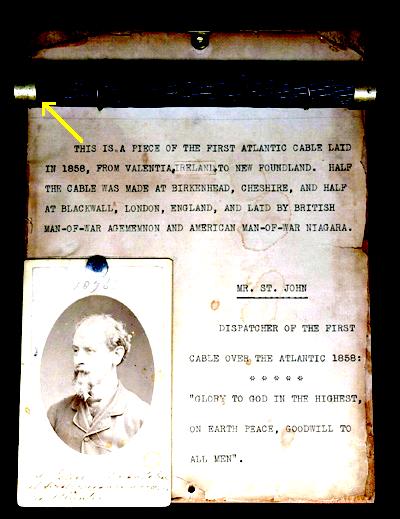

|
Henry A. Pickering Obituary The Salina Journal, Salina, Kansas, 20 August 1940 Archived: 2000 December 14 http://web.archive.org/web/20001214052700/http://www.goodnet.com/~stover/Trans.html Archived: 2001 April 6 http://web.archive.org/web/20010406035449/http://www.goodnet.com/~stover/Trans.html Archived: 2001 May 28 http://web.archive.org/web/20010528142955/http://fastq.com/~cstover/trans.html Archived: 2002 July 1 http://web.archive.org/web/20020701155159/http://www.fastq.com/~cstover/trans.html Archived: 2002 December 7 http://web.archive.org/web/20021207214627/http://www.fastq.com/~cstover/trans.html |
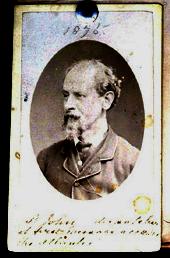
Automobiles
|
|
Guysborough County Historical Society Archived: 2001 May 07 http://web.archive.org/web/20010507012620/http://www.geocities.com/Heartland/Bluffs/7595/ Archived: 2001 October 30 http://web.archive.org/web/20011030182052/http://www.geocities.com/Heartland/Bluffs/7595/ |
|
d'Entremont Millstone found in East Pubnico Archived: 1999 February 20 http://web.archive.org/web/19990220092811/http://fox.nstn.ca/~deonted/millston.html Archived: 2000 June 3 http://web.archive.org/web/20000603200838/http://fox.nstn.ca/~deonted/millston.html Archived: 2001 October 4 http://web.archive.org/web/20011004194325/http://fox.nstn.ca/~deonted/millston.html Archived: 2002 August 5 http://web.archive.org/web/20020805005024/http://pages.ca.inter.net/~deonted/millston.html Archived: 2003 June 5 http://web.archive.org/web/20030605201610/http://pages.ca.inter.net/~deonted/millston.html |
|
History of the Uniacke & District Volunteer Fire Department Archived: 2000 April 23 http://web.archive.org/web/20000423154705/http://www2.cybercities.com/u/udvfd/history.htm Archived: 2001 June 19 http://web.archive.org/web/20010619171545/http://www2.cybercities.com/u/udvfd/history.htm |
Prince Henry Sinclair2 June 1398600th AnniversaryOn 2 June 1998, the Nova Scotia Legislature unanimously adoptedWhereas, according to legend, Prince Henry Sinclair, in 1398, set sail from the Orkney Islands with 12 ships and 300 crew; and Whereas on June 2, 1398, Prince Henry Sinclair and crew landed in Guysborough; and Whereas this week, Sinclair Societies and Scottish clans are celebrating the arrival of Prince Henry in the New World; Therefore be it resolved that this House extend congratulations to the Sinclair Society and wish them every success in their quest to authenticate the arrival of Prince Henry in North America. Complete Hansard report http://www.gov.ns.ca/legi/hansard/han57-1/h98jun02.htm#[Page 613]
This is the earliest event in the history of Nova Scotia that can be dated to a single day (according to legend). The Resolution refers to "Guysborough," located on the west side of the Strait of Canso, which separates the Nova Scotia mainland from Cape Breton Island.
http://www.rosslynchapel.org.uk/ Where folklore meets history, there is usually some legendary character, whose exploits have inspired stories that have been passed down and reinterpreted by each generation... http://www.bbc.co.uk/legacies/myths_legends/scotland/lothian/ http://www.open-st-andrews.com/knights/rosslyn.htm
| |
|
http://www.geocities.com/elfpolitics/tmclansinclair.html The first European to reach these shores... may well have been Henry Sinclair, Earl of Orkney. There is reason to speculate that Sinclair visited Nova Scotia in 1398 — 94 years before Columbus' "voyage of discovery"... The late Frederick J. Pohl, who spent 40 years investigating the Sinclair voyage, asserted that sixty days out from Orkney, Earl Henry's vessels dropped anchor in Nova Scotia's Chedabucto Bay outside Guysborough Harbour on June 1, 1398... http://www.geocities.com/Athens/Aegean/9318/sinclair.html What became of the Templar fleet, and those Brothers of the Order that avoided arrest?... Sinclair's base may have included a castle built in Nova Scotia between the headwaters of the Gold and Gaspereaux Rivers. At the mouth of both of these rivers are islands — both named Oak Island and both being the only islands in Nova Scotia with oak trees growing on them... http://www.tsj.org/sancto.htm Seeing smoke above a distant hill and thinking it to be a sign of civilisation, Zichmni despatched 100 of his soldiers to investigate. Upon their return, the reconnaissance party informed Zichmni that the smoke was a natural phenomenon, billowing from a fire at the base of a nearby hill. Beneath this hill was a spring from which there flowed a black substance like pitch that ran into the sea... It has been speculated that the location of this smoking hill was at a place now known as Stellarton, approximately 50 miles from Guysborough Harbour... http://www.orkneyjar.com/history/historicalfigures/henrysinclair/princehenrytrip2.htm http://members.tripod.com/~clangunn/westfordknight.html http://sinclair2.quarterman.org/600/
Issue I of the 600th Celebration Newsletter July 1996 (issue 1) Issue II of the 600th Celebration Newsletter August 1996 (issue 2) Issue III of the 600th Celebration Newsletter 15 September 1996 (issue 3) Issue IV of the 600th Celebration Newsletter 15 October 1996 (issue 4) Issue V of the 600th Celebration Newsletter 15 November 1996 (issue 5) Issue VI of the 600th Celebration Newsletter 20 December 1996 (issue 6) Issue VII of the 600th Celebration Newsletter 5 February 1997 (issue 7) Issue VIII of the 600th Celebration Newsletter 30 March 1997 (issue 8) Issue IX of the 600th Celebration Newsletter 1 May 1997 (issue 9) Issue X of the 600th Celebration Newsletter 25 June 1997 (issue 10) Issue XI of the 600th Celebration Newsletter 12 August 1997 (issue 11) Issue XII of the 600th Celebration Newsletter 23 August 1997 (issue 12) Issue XIII of the 600th Celebration Newsletter 25 September 1997 (issue 13 Issue XIV of the 600th Celebration Newsletter 21 October 1997 (issue 14) Issue XV of the 600th Celebration Newsletter 3 December 1997 (issue 15) Issue XVI of the 600th Celebration Newsletter January-February 1998 (issue 16) Issue XVII of the 600th Celebration Newsletter March 1998 (issue 17) Issue XVIII of the 600th Celebration Newsletter March 1998 (issue 18) Issue XIX of the 600th Celebration Newsletter May 1998 (issue 19) Issue XX of the 600th Celebration Newsletter July 1998 (issue 20) Issue XXI of the 600th Celebration Newsletter August 1998 (issue 21) |
Oak Island Treasure"one of the most bungled treasure hunts in history"
| ||
|
http://home.att.net/~mleary/oakislan.htm http://members.tripod.com/~Zomb/OAKISLAN.HTM http://ra.nilenet.com/~gaska/oakisland.html http://unmuseum.mus.pa.us/oakisl.htm http://www.activemind.com/Mysterious/Topics/OakIsland/ http://www.activemind.com/Mysterious/Topics/OakIsland/inscribed_stones.html http://www.atlantisrising.com/issue20/20templar.html http://www.btinternet.com/~keypress/ http://www.criticalenquiry.org/oakisland/ http://www.csicop.org/si/2000-03/i-files.html http://www.freemasonry.bc.ca/Writings/oak_island/oak_island01.html http://www.geocities.com/Athens/Delphi/3636/templar.htm Nova Scotia Department of Natural Resources (DNR) Minerals and Energy Branch, Minerals Update volume 12, Spring 1997 Oak Island, which lies just off the coast of Nova Scotia near Western Shore, Lunenburg County, has been a target for treasure-hunters since 1795. Excavations at the site have encountered wood, interpreted as barriers of oak logs, as deep as 30m below surface. When local film producer Andrew Cochran needed an authoritative source for his upcoming documentary on the Oak Island mystery, he came to the Department's office at Founders Square in Halifax, complete with film crew, to interview Ralph about the morphology and origin of glacial deposits... Ralph Stea has studied the Quaternary geology of Nova Scotia for twenty years. His maps and reports have been a mainstay of the department's publications list since 1978, and his contributions to scientific journals have included publications in Nature, Quaternary Research, Marine Geology, Sedimentary Geology, Journal of Geochemical Exploration, and many more... http://www.gov.ns.ca/natr/meb/mu/muv12.htm
http://www.historic-uk.com/HistoryUK/Scotland-History/CaptainKidd.htm http://www.newadvent.org/cathen/14493a.htm http://www.oakislandtreasure.com/ http://www.oakislandtreasure.com/friends.htm http://www.prestonchild.com/riptide/riptide_oak.htm http://www.rawalker.ca/Young_George.htm http://www.skullandcrossbones.org/articles/oak-Island.htm On Friday morning October 13th, 1307 — the reason for which Friday the 13th has become known as an unlucky day — King Phillip IV together with Avignonese Pope Clement V, ruthlessly suppressed the Order of the Knights Templar throughout Europe, with false accusations, arrests, torture and executions ... A large number of Templars escaped that day to an uncertain future, and found refuge abroad. On the eve of the arrests, the entire Templar fleet mysteriously vanished from the port of La Rochelle carrying with it a vast fortune, the fate of which remains a mystery down to this day... http://www.skullandcrossbones.org/articles/jolly-roger.htm http://www.straightdope.com/classics/a2_441.html Video documentary by Cochran Entertainment...surprising new evidence... http://www.telefilm.gc.ca/en/prod/tv/tv97/96.htm
|
Joshua Mauger
|
|
Captain Joshua Mauger by Brian Kinsman Archived: 1999 February 18 http://web.archive.org/web/19990218155725/http://chebucto.ns.ca/Environment/FOMIS/hist-s2.html Archived: 2001 June 20 http://web.archive.org/web/20010620125955/www.chebucto.ns.ca/Environment/FOMIS/hist-s2.html Archived: 2002 June 13 http://web.archive.org/web/20020613024940/http://www.chebucto.ns.ca/Environment/FOMIS/hist-s2.html |
|
Highlights of the Gilder Lehrman Collection The Joshua Mauger Papers Archived: 2001 February 11 http://web.archive.org/web/20010211000541/http://www.gilderlehrman.com/HTM/publications/sense/ Archived: 2001 August 20 http://web.archive.org/web/20010820033842/http://www.gilderlehrman.com/HTM/publications/sense/ Archived: 2001 December 15 http://web.archive.org/web/20011215085109/http://www.gilderlehrman.com/HTM/publications/sense/ |
Town of Lunenburg
|
|
The Montbeliard Settlers Archived: 1998 December 05 http://web.archive.org/web/19981205182522/http://www.montbeliard.org/ Archived: 1999 May 01 http://web.archive.org/web/19990501175520/http://www.montbeliard.org/ Archived: 2000 October 06 http://web.archive.org/web/20001006001225/http://www.montbeliard.org/ Archived: 2001 December 02 http://web.archive.org/web/20011202064128/http://www.montbeliard.org/ |
|
Jess Coffill: Shark Infested Waters Archived: 1999 October 8 http://web.archive.org/web/19991008061506/http://business.auracom.com/rotaryamh/marks/1c.htm Archived: 2001 January 24 http://web.archive.org/web/20010124131600/http://business.auracom.com/rotaryamh/marks/1c.htm Archived: 2001 June 27 http://web.archive.org/web/20010627223009/http://business.auracom.com/rotaryamh/marks/1c.htm Archived: 2001 August 3 http://web.archive.org/web/20010803085026/http://business.auracom.com/rotaryamh/marks/1c.htm Archived: 2001 November 2 http://web.archive.org/web/20011102071815/http://business.auracom.com/rotaryamh/marks/1c.htm |
|
Journeys of Exploration 1497-1650 Archived: 1998 February 16 http://web.archive.org/web/19980216131059/http://www-nais.ccm.emr.ca/wwwnais/select/explore/english/html/eexplor3.html Archived: 1999 February 18 http://web.archive.org/web/19990218120944/http://www-nais.ccm.emr.ca/wwwnais/select/explore/english/html/eexplor3.html Archived: 2000 August 17 http://web.archive.org/web/20000817012118/http://www-nais.ccm.emr.ca/wwwnais/select/explore/english/html/eexplor3.html Archived: 2001 February 8 http://web.archive.org/web/20010208131151/http://www-nais.ccm.emr.ca/wwwnais/select/explore/english/html/eexplor3.html |
|
Council of Nova Scotia Archives Archived: 1999 February 25 http://web.archive.org/web/19990225095634/http://fox.nstn.ca/~cnsa/ Archived: 2000 August 17 http://web.archive.org/web/20000817012128/http://fox.nstn.ca/~cnsa/ Archived: 2001 May 15 http://web.archive.org/web/20010515232310/http://fox.nstn.ca/~cnsa/ Archived: 2001 October 29 http://web.archive.org/web/20011029124607/http://fox.nstn.ca/~cnsa/ Archived: 2002 July 23 http://web.archive.org/web/20020723010448/http://www.councilofnsarchives.ca/ Archived: 2003 June 22 http://web.archive.org/web/20030622043750/http://www.councilofnsarchives.ca/index.html |
|
Cunard Webpages
On 29 June 1998, the following notice appeared at http://www.liv.ac.uk/~archives/ Cunard webpages are temporarily unavailable Records of the Cunard Steamship Company, c1840-1976 We [the University of Liverpool] regret we are unable to provide an enquiry service at the present time. The following links, which previously led to a lot of Cunard history, are no longer valid. They are kept on record here, in the hope that this Cunard archive will become available again. http://www.liv.ac.uk/~archives/cunard/chome.htm Cunard Archives, University of Liverpool http://www.liv.ac.uk/~archives/cunard/ships/ndx.htm List of All Cunard Ships
|
|
The Cunard Line: A Brief Chronology Archived: 1998 July 1 http://web.archive.org/web/19980701064158/http://www.ships.co.uk/merchant/lines/cunard/index.html Archived: 1998 December 2 http://web.archive.org/web/19981202194117/http://www.ships.co.uk/merchant/lines/cunard/index.html Archived: 1999 May 8 http://web.archive.org/web/19990508110556/www.ships.co.uk/merchant/lines/cunard/index.html Archived: 1999 October 13 http://web.archive.org/web/19991013181630/http://www.ships.co.uk/merchant/lines/cunard/index.html |
|
Decorated WWII Airmen of Pictou County by East Pictou Rural High School Archived: 1997 March 30 http://web.archive.org/web/19970330214406/http://mailserv.eprhs.ednet.ns.ca/project.htm Archived: 1998 May 5 http://web.archive.org/web/19980505010543/http://mailserv.eprhs.ednet.ns.ca/project.htm Archived: 1999 April 27 http://web.archive.org/web/19990427143135/http://mailserv.eprhs.ednet.ns.ca/project.htm Archived: 2000 August 17 http://web.archive.org/web/20000817012119/http://mailserv.eprhs.ednet.ns.ca/project.htm |
(1) The Pubnicos: Oldest Region Still Acadian
(2) The Hills at Argyle Head
(3) His Father Was His Uncle
(4) Port Lomeron or Chebogue
(5) Hanging of Two Acadians and Three Indians in Boston
(6) Hush-Hush Money
(7) Widow at 13, Millionaire at 34
(8) He Sawed Off a Leg of One of His Men But They Pickled His Head
(9) Wedgeport A Hundred Years Ago and Beyond
(10) Baptiste, the Rascal
(11) Baptiste Was Said to Have a Wife in Every Port
(12) She Presided Over Councils of War Against Her Kindred
(13) Napoleon Bucksaw
(14) The "Casket" Woman
(15) He Jumped Bail
(16) They Cut Off the Finger That Tipped the Scale and Some More
(17) They Tied Themselves to the Mast and Steering Wheel So Not to Be Washed Overboard
(18) Wilson Island
(19) Witchcraft, Sorcerers and Spells
(20) Were the Vikings Here?
(21) The First "Canadian" Child With "European" Blood Outside Newfoundland Was Born At Our Doorstep
(22) First Nun in North America Was Born at Our Doorstep
(23) The WRAYTON-MacDonnell Family: Its Tragedies and Wealth
(24) She Was Forced to Watch Him Hang 40 of Her Men With a Lasso Around Her Neck
(25) A Confession By Proxy
(26) He Prayed and His Life Was Spared
(27) The Acadian Participation in the War of Independence of the U.S.
(28) They Intended to Make Nova Scotia the 14th State of the Union
(29) "It's the Best Gang of Greenies I've Ever Seen"
(30) The Bridge Spanning Indian Sluice
(31) The First Expulsion of the Acadians
(32) The Second Expulsion of the Acadians
(33) The Third Expulsion of the Acadians
(34) The Return From Exile in 1766 of Some of the Acadians of Yarmouth County
(35) The Log Cabins of West Pubnico
(36) Two Acadian Martyrs
(37) French People Who Settled in Yarmouth County During the French Revolution [1789] and the Napoleon Wars
(38) French People Who Settled in Digby County During the French Revolution and Napoleon Wars
(39) The First Canadian to Become an American Citizen
(40) The Golden Age of the Old Time Acadians
(41) The 25th Anniversary of the Acadian Flag
(42) The Old Shelburne Road
(43) Fort Saint Louis
(44) 465th Anniversary of the Name "Acadie"
(45) Sentenced to Be Hanged as a Pirate, He Died a Gentleman, Respected by Friends and Neighbours
(46) The Rise and Fall of Louis A. Surette
(47) The "French Cross" at Morden, N.S.
(48) Sentenced To Be Whipped With the Cat-o-Nine-Tails
(49) Capt. Pierre Doucet, Esq. (1750-1792)
(50) Amable Doucet, Esq. (1737-1806)
(51) The First Christmas in North America
(52) Ducking and Keel-Hauling
(53) The Vow of the Mariners
(54) The Escape of Francois L. Bourneuf
(55) Pubnico is Something to Brag About
(56) The Seizure of "The Pembrook" By the Acadians
(57) Marie Babin of Surette's Island Was Not the Last of the Deported
(58) The Story of the Acadian Bells: Those of Port Royal
(59) The Story of the Acadian Bells: Those of Fortress Louisbourg
(60) The Story of the Acadian Bells: The Others of Cape Breton
(61) The Story of the Acadian Bells: Those of Minas and the Isthmus of Chignecto
(62) The Story of the Acadian Bells: Those of Prince Edward Island
(63) The Story of the Acadian Bells: Those on the Saint John River, N.B.
(64) The Story of the Acadian Bells: Maine, St.Pierre et Miquelon, and California
(65) The Story of the Acadian Bells: in Pubnico
(66) The Sinking of the DUKE WILLIAM and of the VIOLET Taking the Acadians into Exile
(67) Holy Week A Couple Of Generations Ago
(68)The Conflagration of 1820 in Clare
(69) Vengeance of the Micmacs Mocked in Their Religious Beliefs
(70) Came to Canada to Find its Longitude; Went to South America and Discovered that the World is Flat
(71) The Escape of the Acadians From Fort Lawrence at the Time of the Expulsion
(72) The Escape of the Acadians From Fort Beausejour at the Time of the Expulsion
(73) The First Mass in Canada Celebrated on the South Shore of Nova Scotia
(74) Jean Campagna, the Sorcerer
(75) Variations in French Family Names in South West Nova Scotia
(76) The Big Storms of the Centuries in South-Western Nova Scotia
(77) The Adventure of Benoni d'Entremont With the "Bonaventure"
(78) Simon "Squire" d'Entremont
(79) An Account of the Flight of the Acadians at the Time of the Expulsion
(80) The Wreck of the TIBEL
(81) Pubnico Natal Day - July 17
(82) Cape Sable Might Have Been the See of the First Canadian Bishop
(83) The "Klondike"
(84) The Railroad Era
(85) The Acadian Symbols
(86) A Voyage to Nova Scotia Made in 1731 By Robert Hale of Beverley
(87) Restrictions and Penalties in Days of Yore
(88) My First Entrance to College
(89) Hidden Treasures in Tusket Islands
(90) A Father Assails His Son in Combat
(91) Was to Be Sent Back to Nova Scotia From Exile
(92) Dropping the King's Name for Shame
(93) An Encounter With a German U-Boat off Our Shores
(94) Betrayed in His Love, He Died of a Broken Heart
(95) The Acadians at Horse-Shoe Cove Prior to the Expulsion
(96) The Ghost Ship "Yarmouth"
(97) Lobster Bay: Its Place Names of Yesteryear
(98) Place Names in West Pubnico Region
(99) The Place Names of Quinan
(100) 100th Anniversary of St. Peter's Church in West Pubnico
FINAL LETTER to Father Clarence
The Saxby Gale4-5 October 1869an October 4-5, 1869 hybrid hurricane and record storm surge ...How do we know that there was a tropical cyclone perhaps as serious as a Category 2 hurricane, on the Saffir-Simpson Scale, on the evening of October 4-5, 1869? Well, in fact there were any number of observers on the ground, and out at sea, in the path of the storm and along its edges. And there were at least 50 daily and weekly newspapers reporting along the track of the storm in the eastern United States, in New England, Maine, and in the Maritime Provinces of Canada... http://www.dal.ca/~es/seminars/1999/1999-sem-ar.htm
...One of the worst storms to affect the Tantramar was the Saxby Gale of Oct. 4-5, 1869. Although formal weather forecasts weren't available 130 years ago, the infamous Saxby Gale was predicted well in advance. Almost a year earlier, in December 1868, an amateur astronomer serving in the Royal Navy, Lieutenant S. M. Saxby, wrote a letter to all major London newspapers. He suggested that there would be "a storm of immense and devastating force" on Oct. 4-5 1869. At the time, Saxby's prediction was widely publicized. However, most people dismissed his warning. It was widely believed that no one could predict such an event nearly a year in advance...... Tantramar Flashback column, Sackville Tribune-Post, 6 October 1999 http://www.billhamiltonflashback.ca/articleFull.tpl?a_id=65&c_sku=1&startat=1 http://www.confex2.com/ams/99annual/abstracts/569.htm
|
|
Abstract — Her Majesty's Yankees: American Authority in the Supreme Court of Nova Scotia, 1837–1901 by Bernard J. Hibbitts Archived: 1996 November 9 http://web.archive.org/web/19961109074643/http://www.law.pitt.edu/hibbitts/hermaj.htm |
|
Last Writes? Re-assessing the Law Review in the Age of Cyberspace by Bernard J. Hibbitts Archived: 1996 November 9 http://web.archive.org/web/19961109071108/www.law.pitt.edu/hibbitts/lastrev.htm Archived: 1998 February 7 http://web.archive.org/web/19980207080254/http://www.law.pitt.edu/hibbitts/lastrev.htm Archived: 1999 October 10 http://web.archive.org/web/19991010033135/http://www.law.pitt.edu/hibbitts/lastrev.htm Archived: 2001 April 5 http://web.archive.org/web/20010405180452/http://www.law.pitt.edu/hibbitts/lastrev.htm Archived: 2002 August 3 http://web.archive.org/web/20020803094228/http://www.law.pitt.edu/hibbitts/lastrev.htm Archived: 2003 February 7 http://web.archive.org/web/20030207131628/http://www.law.pitt.edu/hibbitts/lastrev.htm |
|
Archived: 1998 February 7 http://web.archive.org/web/19980207081957/http://www.law.pitt.edu/hibbitts/owlw.htm Archived: 1999 November 10 http://web.archive.org/web/19991110004942/http://www.law.pitt.edu/hibbitts/owlw.htm Archived: 2000 December 10 http://web.archive.org/web/20001210074500/http://www.law.pitt.edu/hibbitts/owlw.htm Archived: 2002 January 27 http://web.archive.org/web/20020127073108/http://www.law.pitt.edu/hibbitts/owlw.htm Archived: 2003 February 24 http://web.archive.org/web/20030224172103/http://www.law.pitt.edu/hibbitts/owlw.htm |
Grand Banks
|
|
The Golden Horse Fountain, Yarmouth Archived: 1997 February 1 http://web.archive.org/web/19970201205813/http://ycn.library.ns.ca/ycn/fount-3.htm Archived: 1997 October 18 http://web.archive.org/web/19971018021230/http://www.ycn.library.ns.ca/ycn/fount-3.htm Archived: 1998 June 30 http://web.archive.org/web/19980630175018/http://www.ycn.library.ns.ca/ycn/fount-3.htm |
Invoice Date 23 11 83
Code Title Price
1 F0M100 MERL PHYS 1 DISK PET 110.00
1 F0M190 WAV VIBRTON DISK PET 138.00
1 F0M390 LAB SIMLATN DISK PET 99.00
1 F0M559 MATH SCI SRS 12PR PE 207.00
1 F0M737 ELEC 16 SERIES PET 275.00
1 F2M190 CM NMN SR PET-64 DSK 66.00
1 F5M211 CLS MGR 2 PET-64 DSK 95.00
|
Note: All of the URLs shown here have been obtained by |
|
Wayback Machine
Wayback Machine
"Use the Wayback Machine to view web sites from the past." Nova Scotia History Index The Wayback Machine has copies of this webpage from the early days:
|
(New counter started 7:00am 29 January 2004)
Counter reading at noon 1 Feb 2004: 00214
Counter reading at noon 1 Jun 2004: 10123 573
Counter reading at noon 1 Dec 2004: 23198 500
Seven-day average
(Old counter started on 23 November 2000)
Counter reading at noon 1 Dec 2000: 00573
Counter reading at noon 1 Jun 2001: 13555 499
Counter reading at noon 1 Dec 2001: 27233 526
Counter reading at noon 1 Jun 2002: 41110 533
Counter reading at noon 1 Dec 2002: 51408 396
Counter reading at noon 1 Jun 2003: 62338 420
Counter reading at noon 1 Dec 2003: 72037 373
(Counter service ceased on 31 December 2003)
Seven-day average